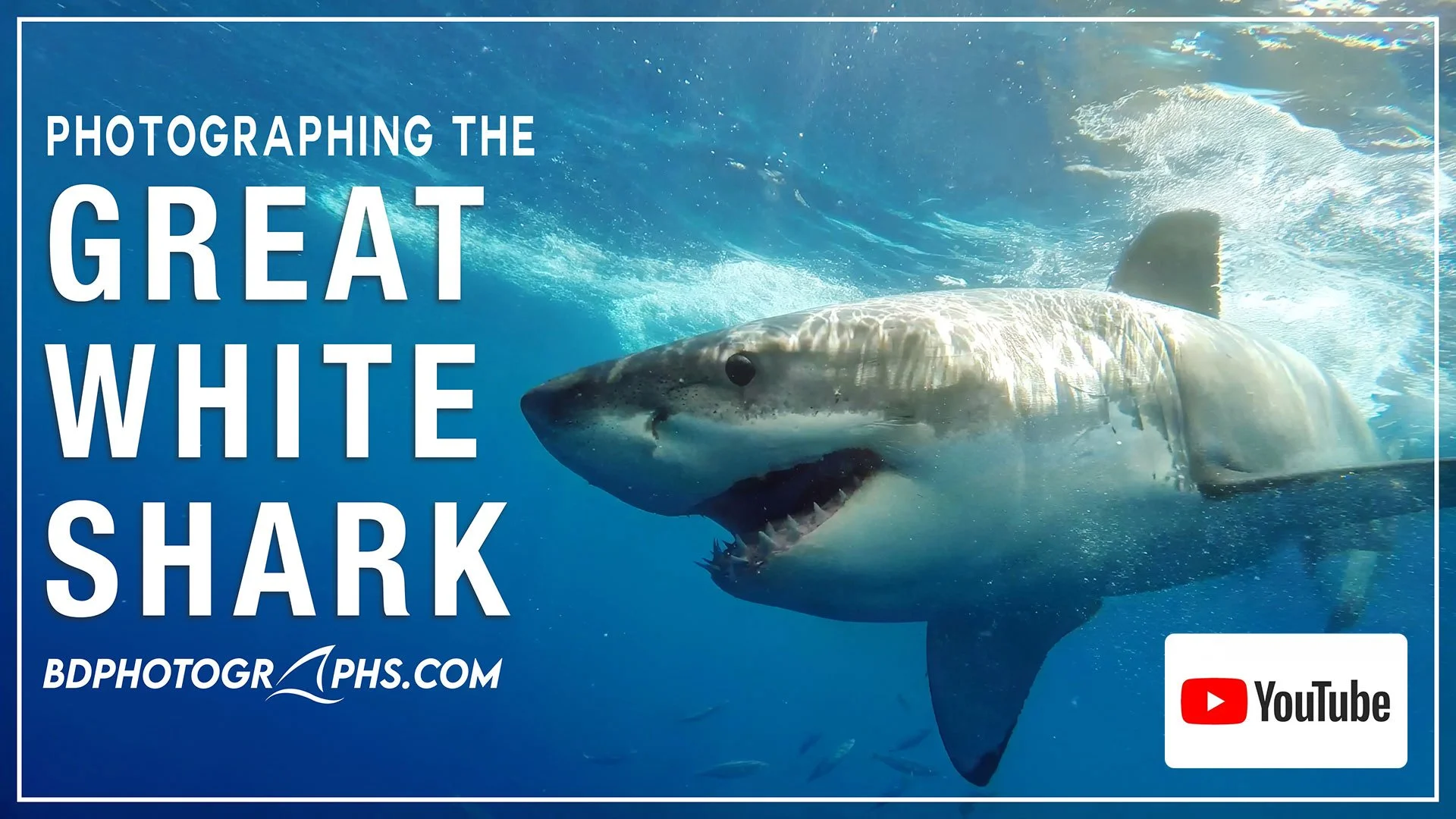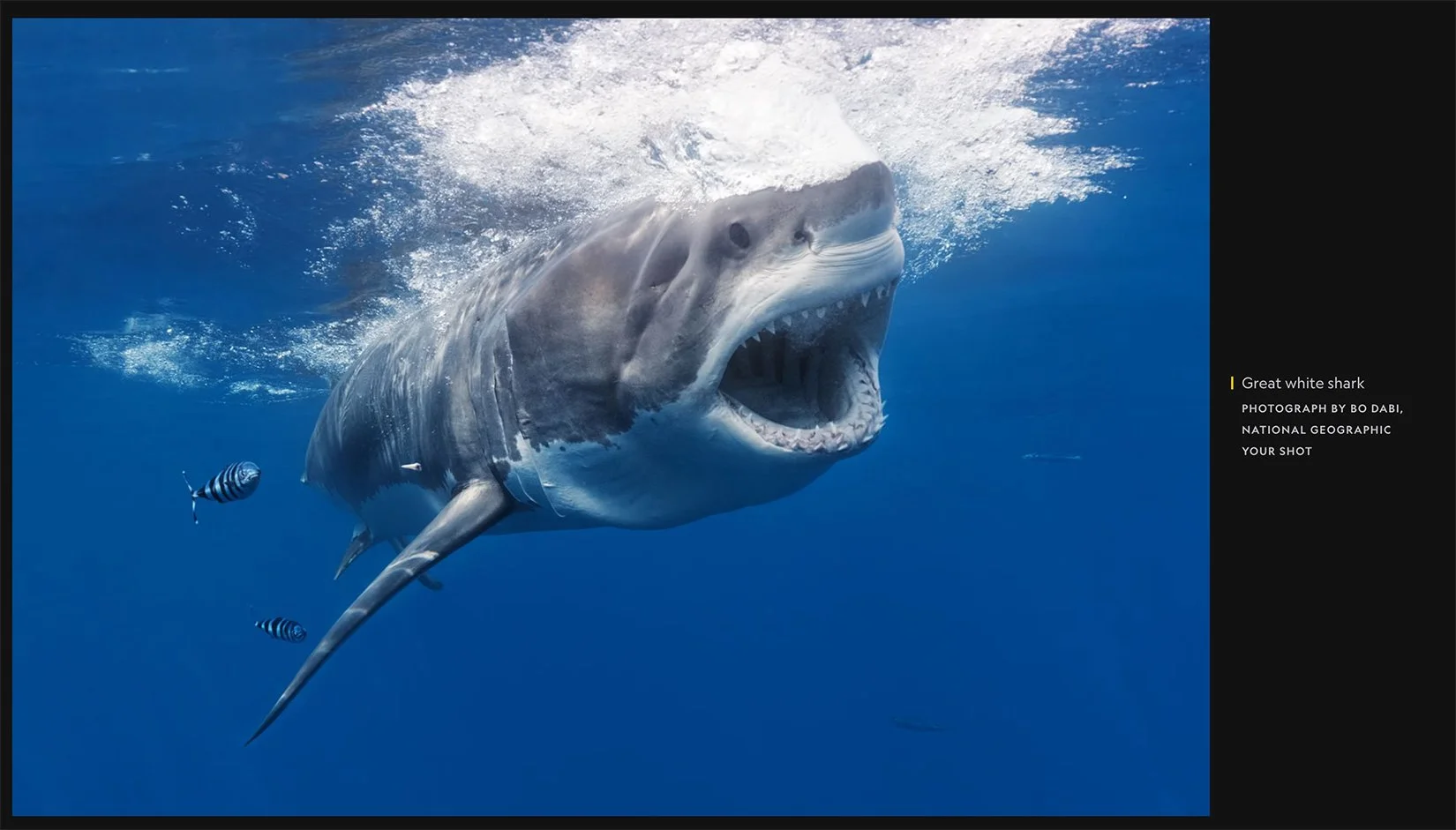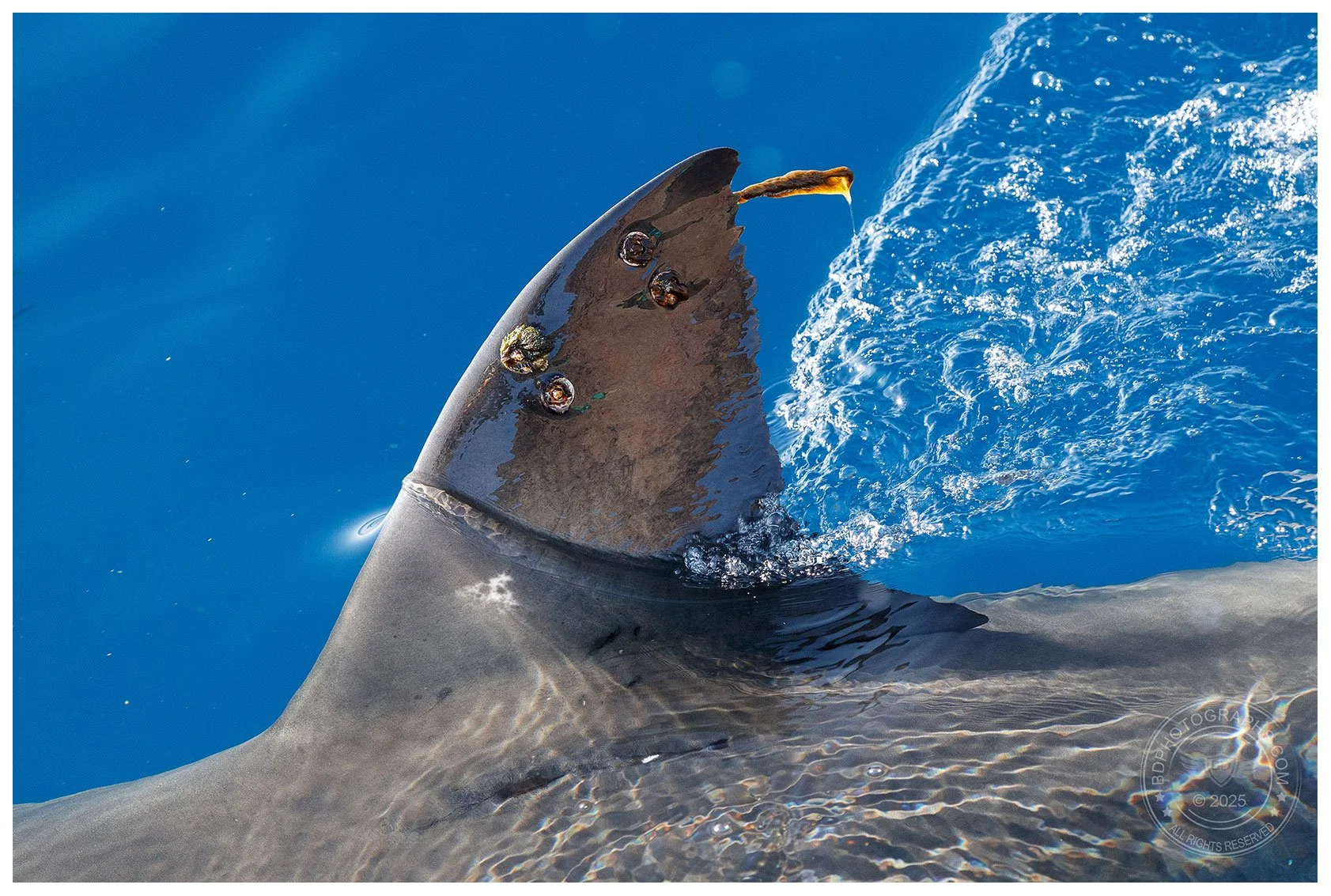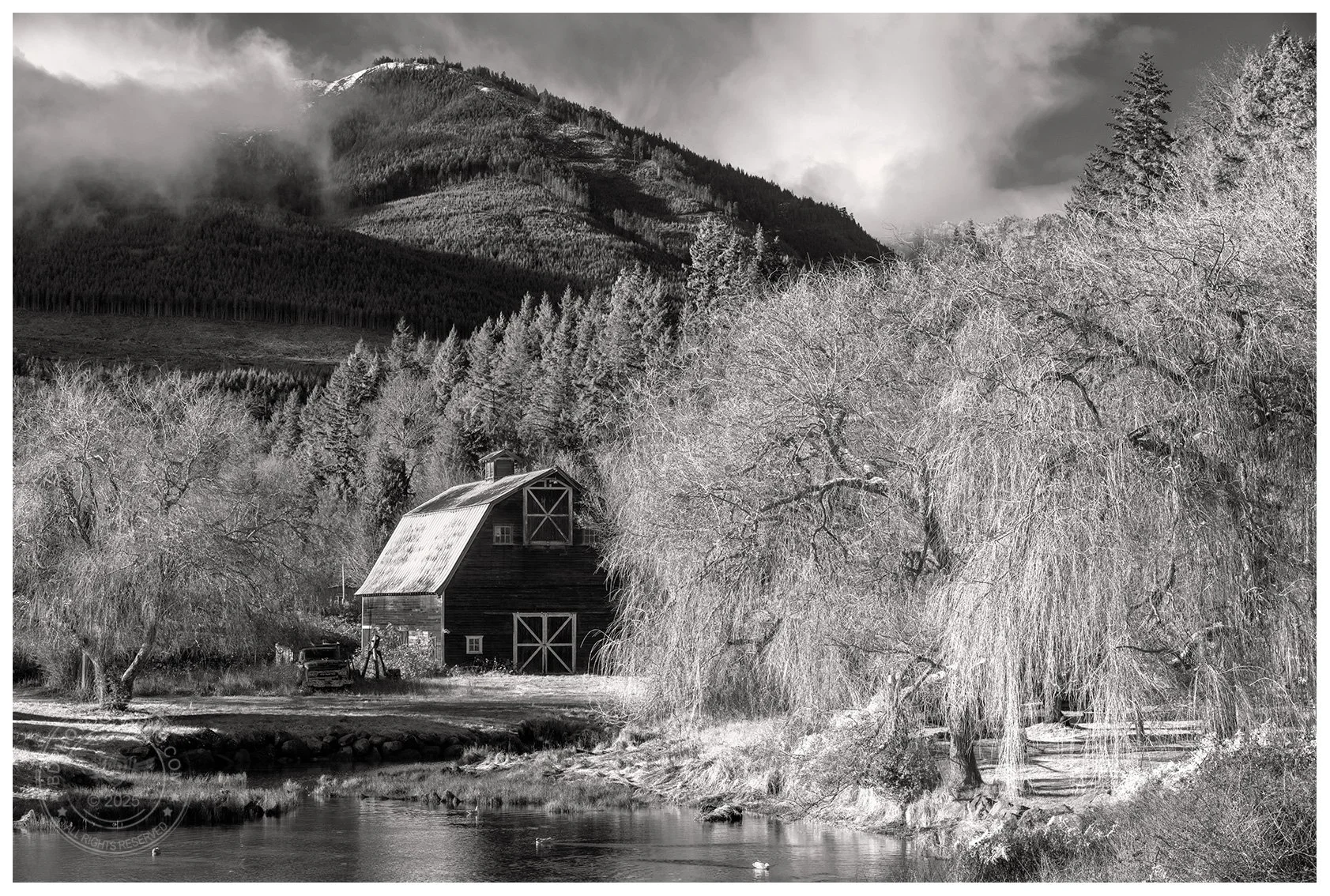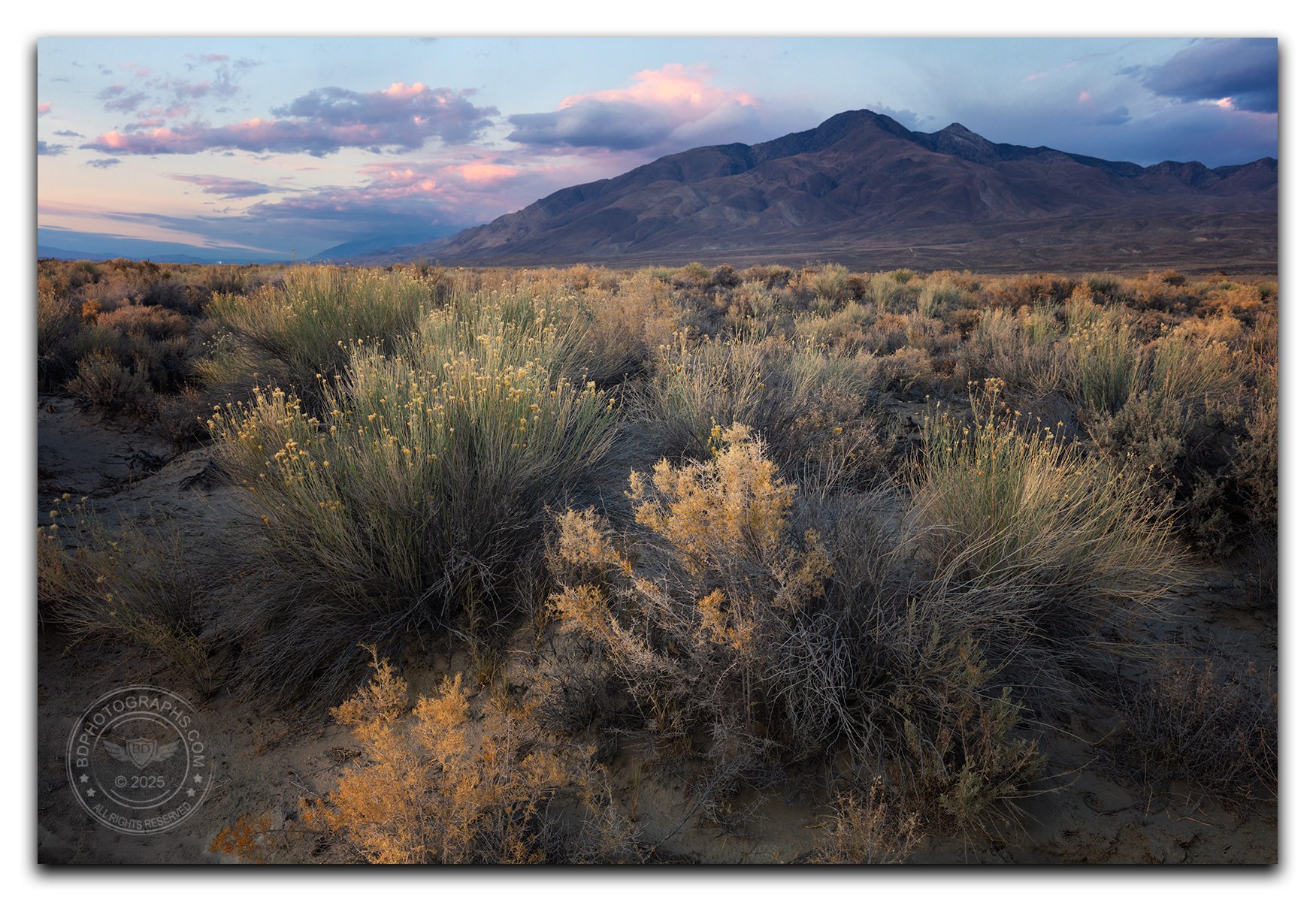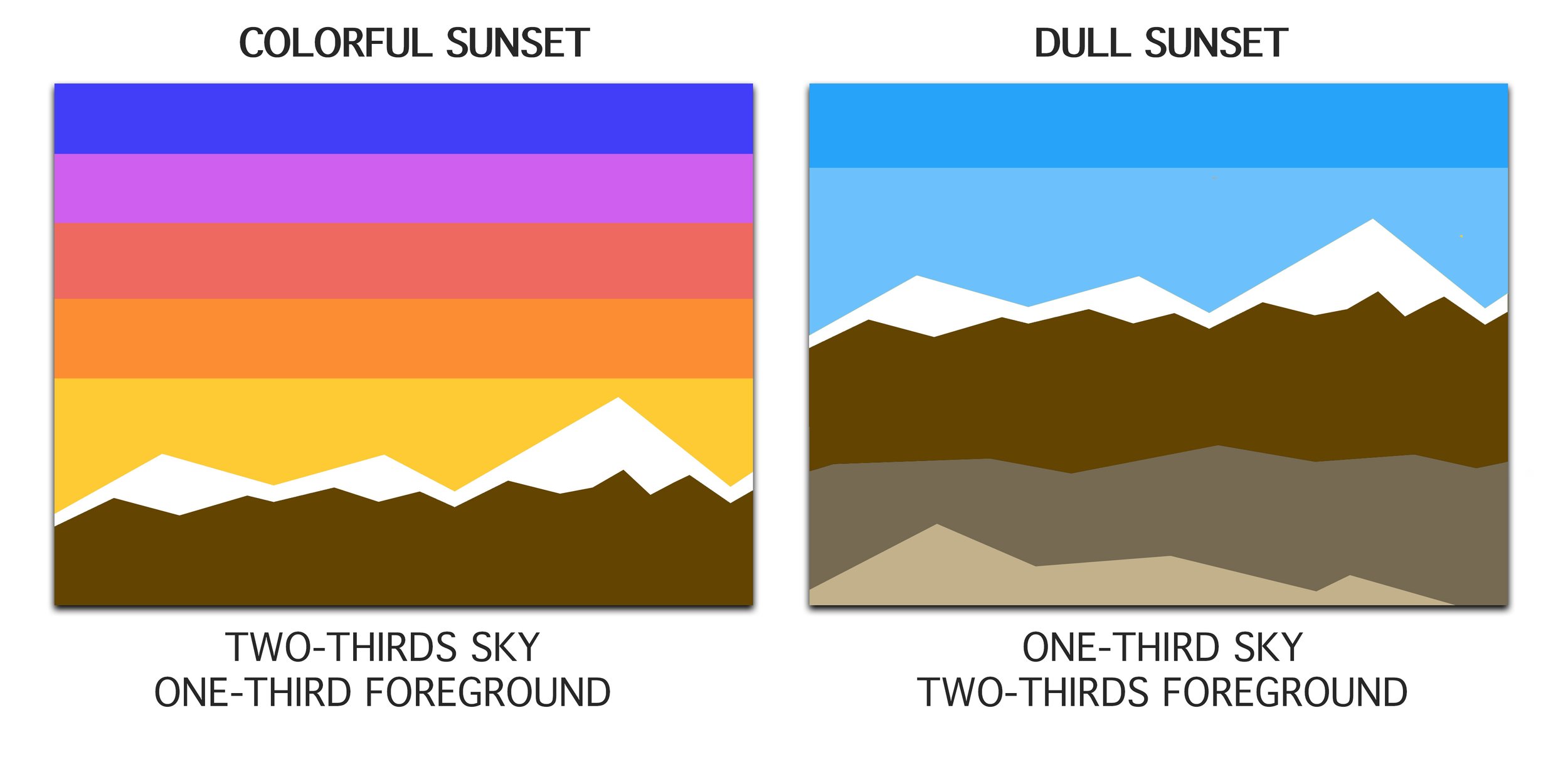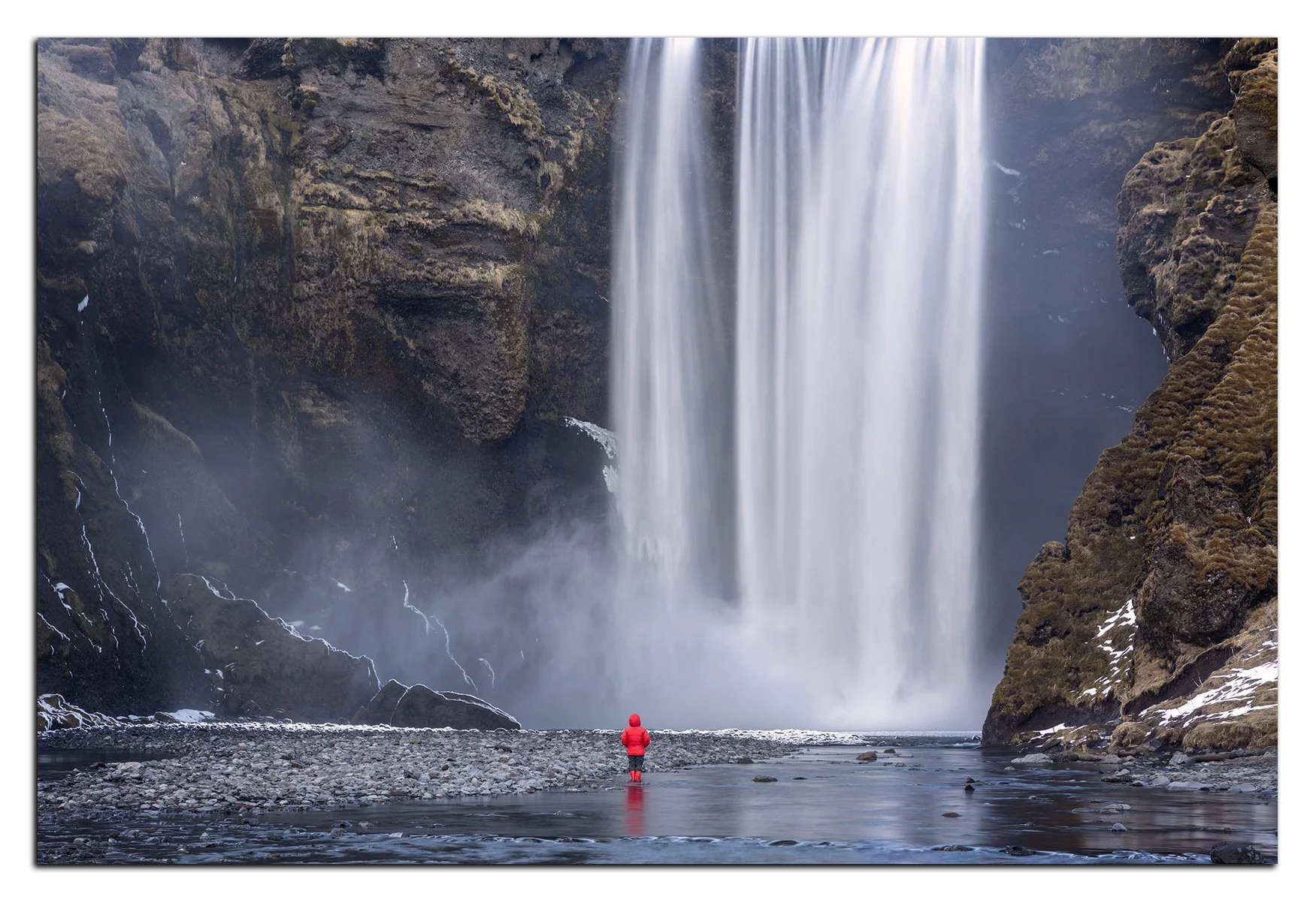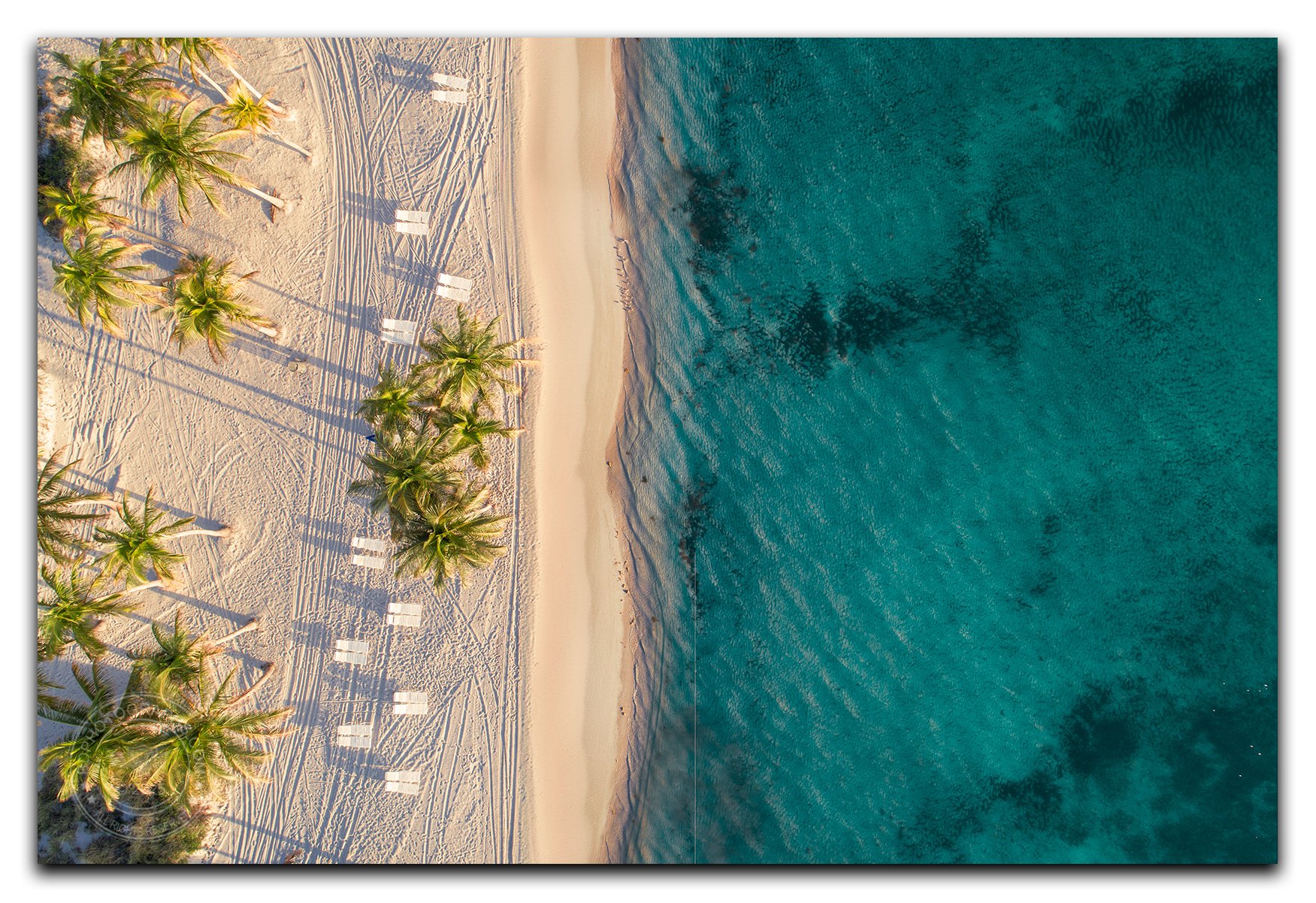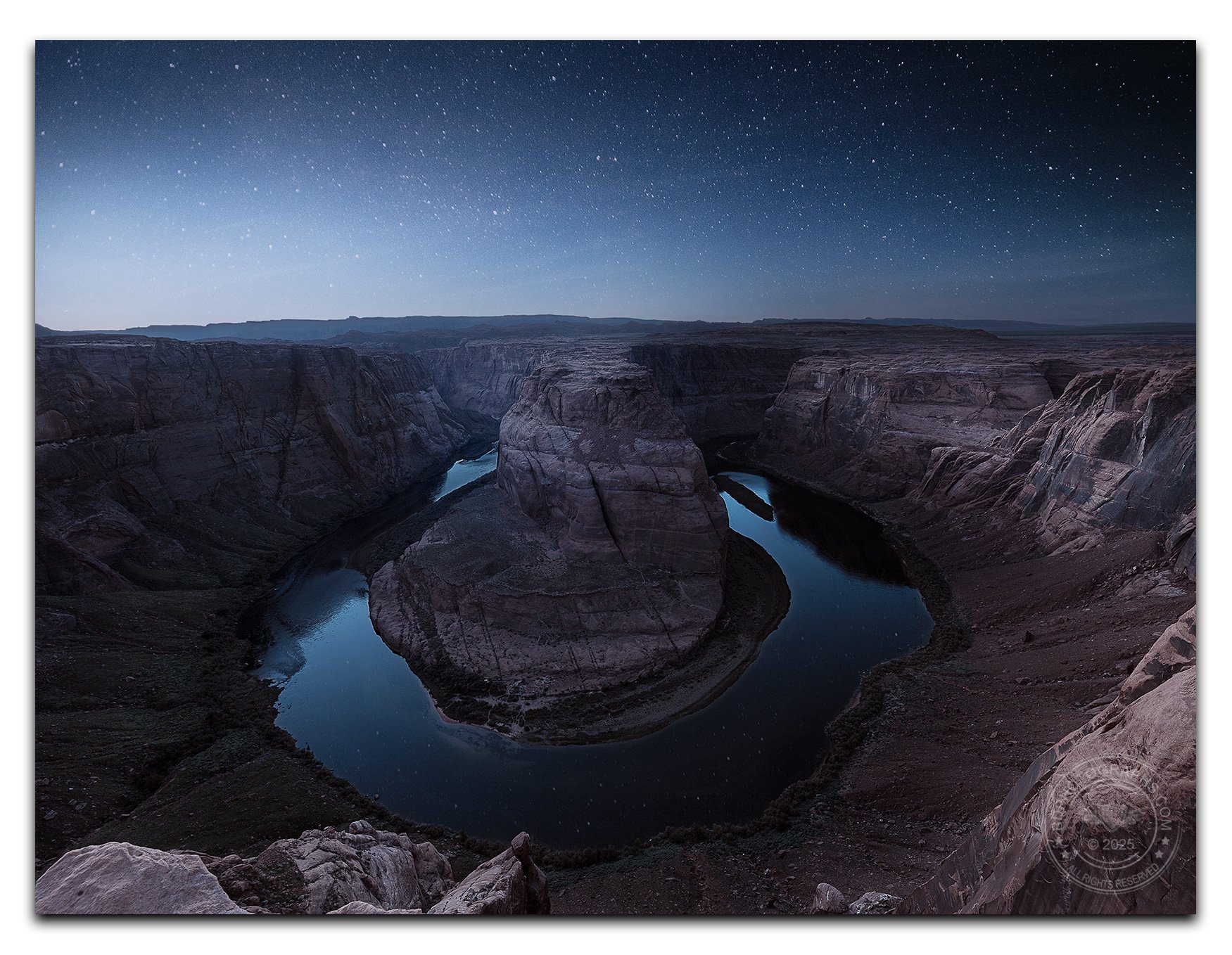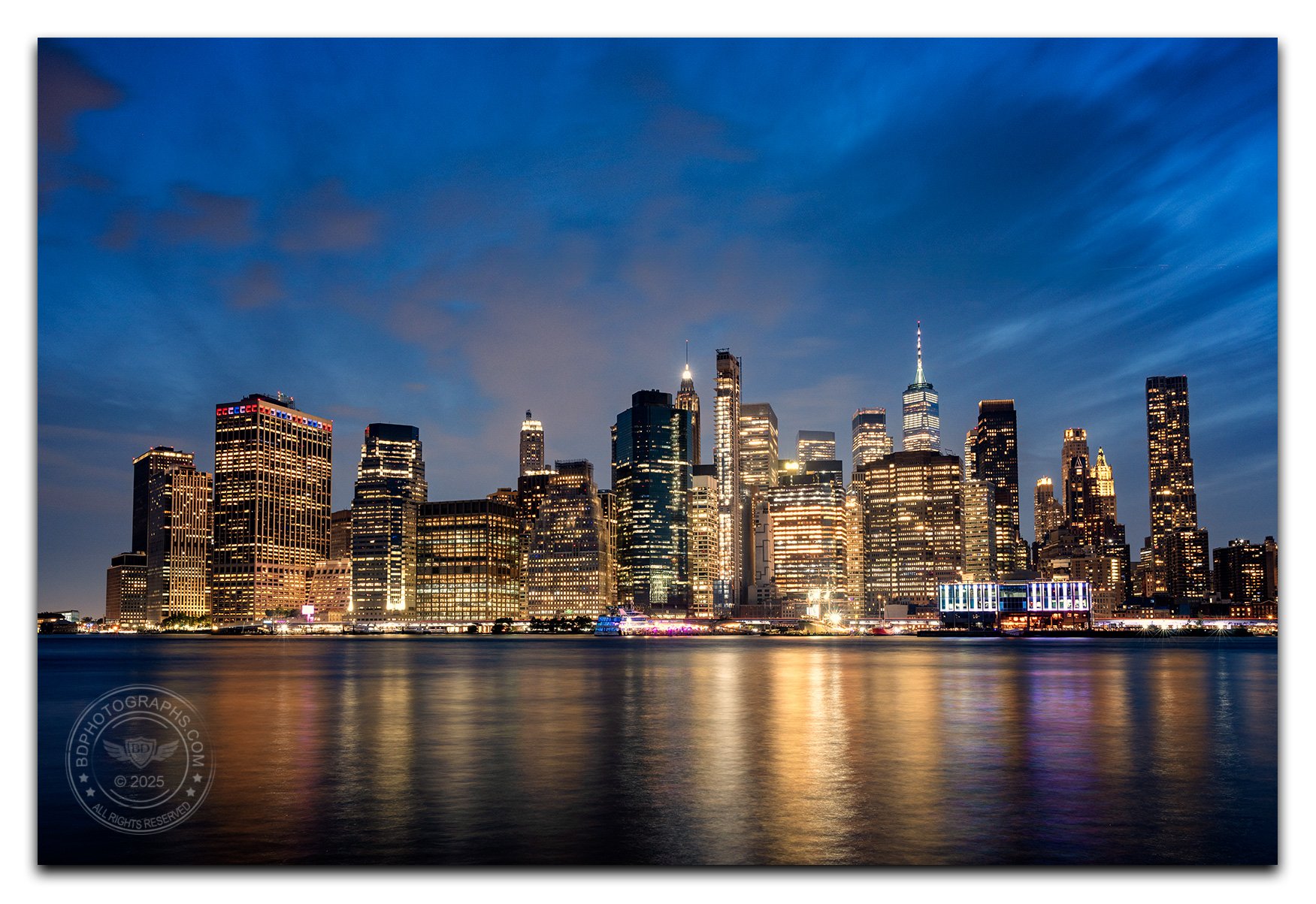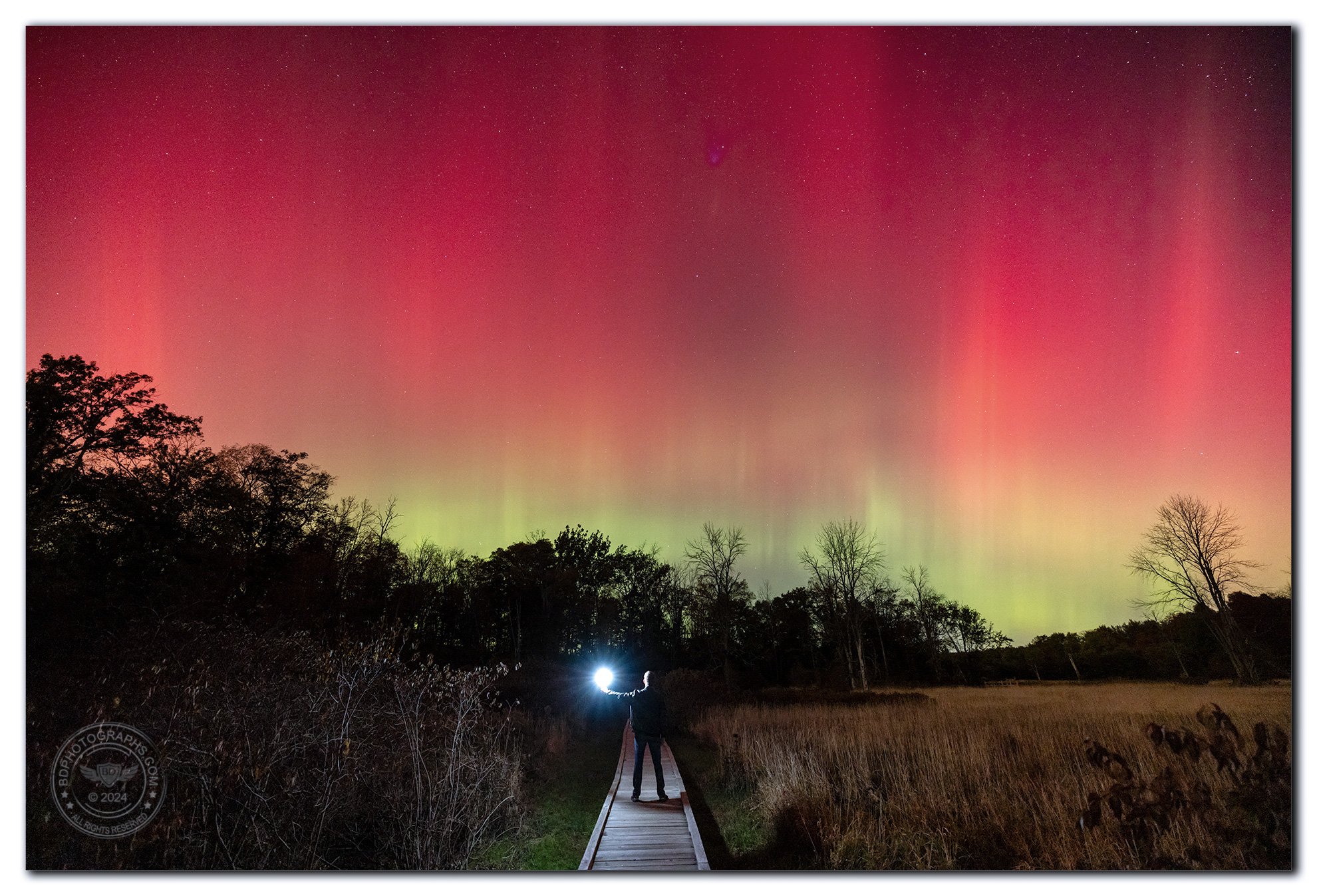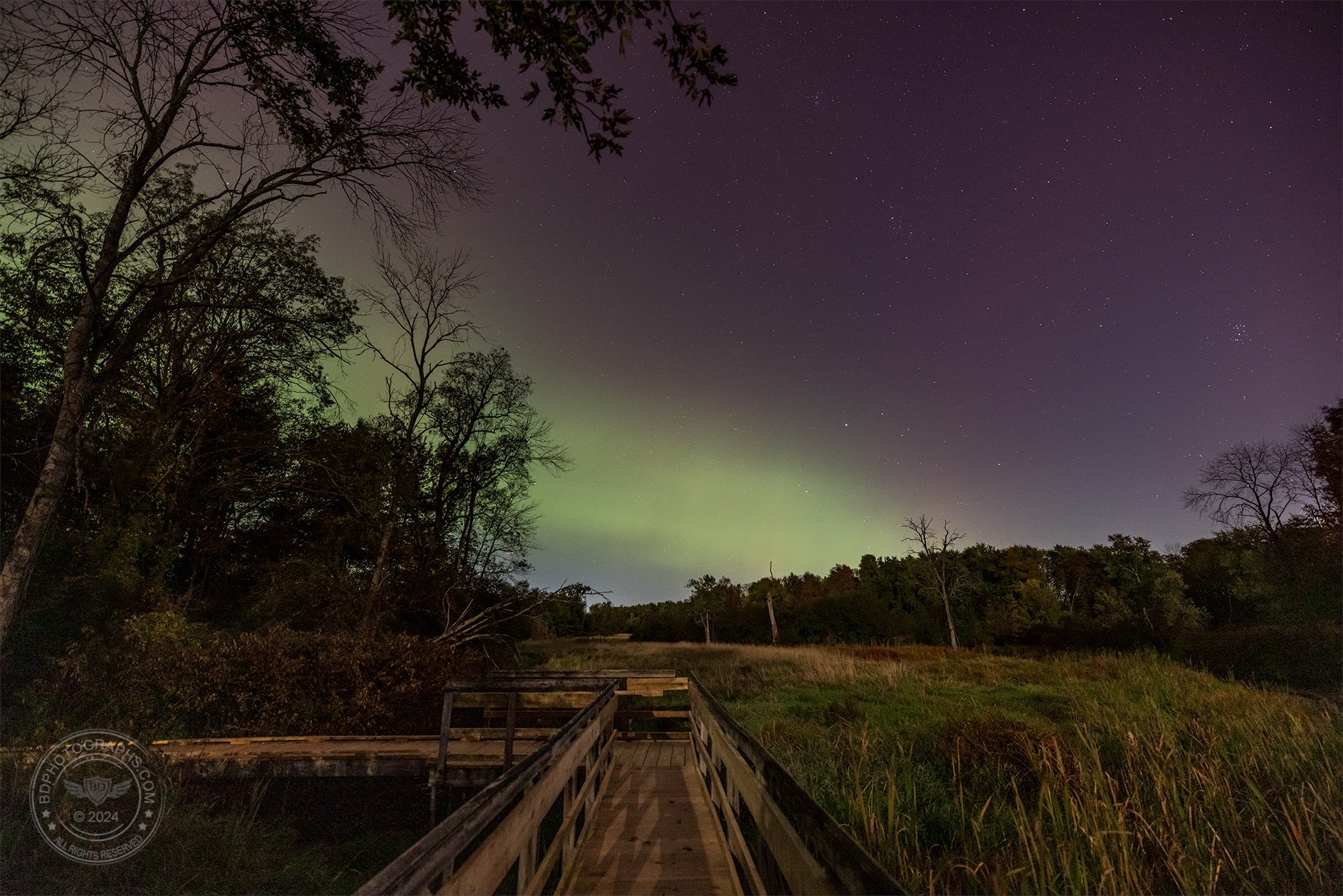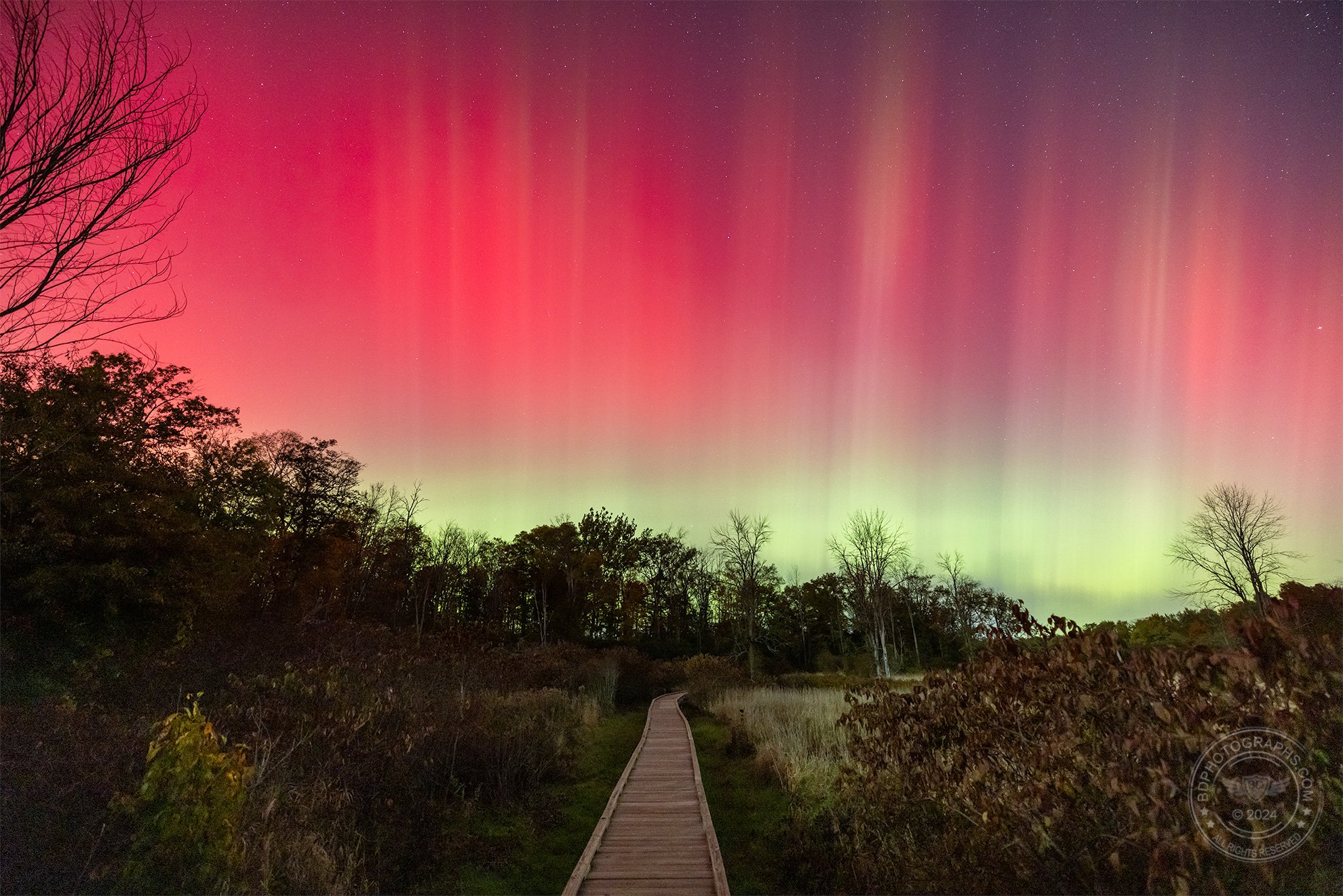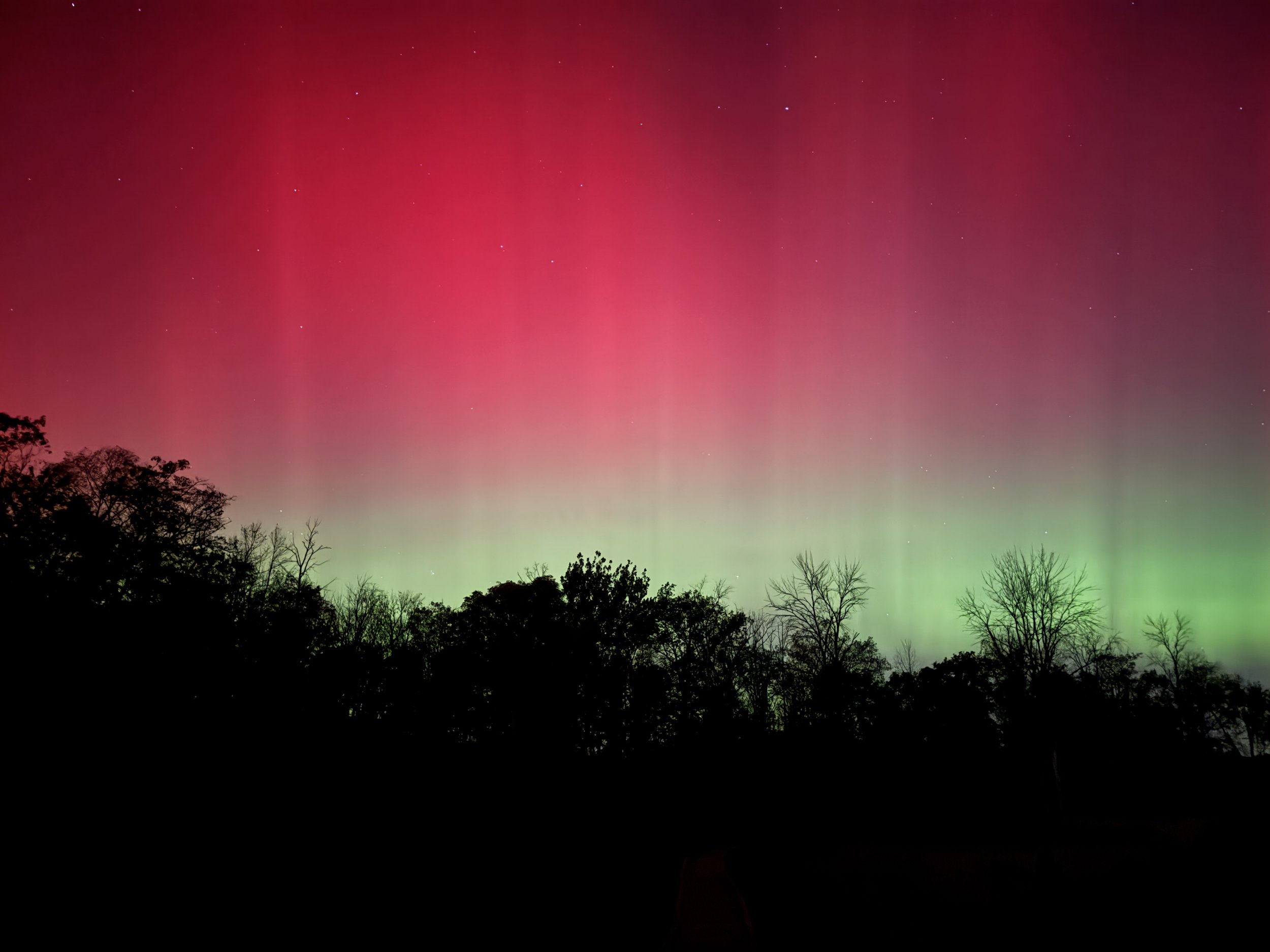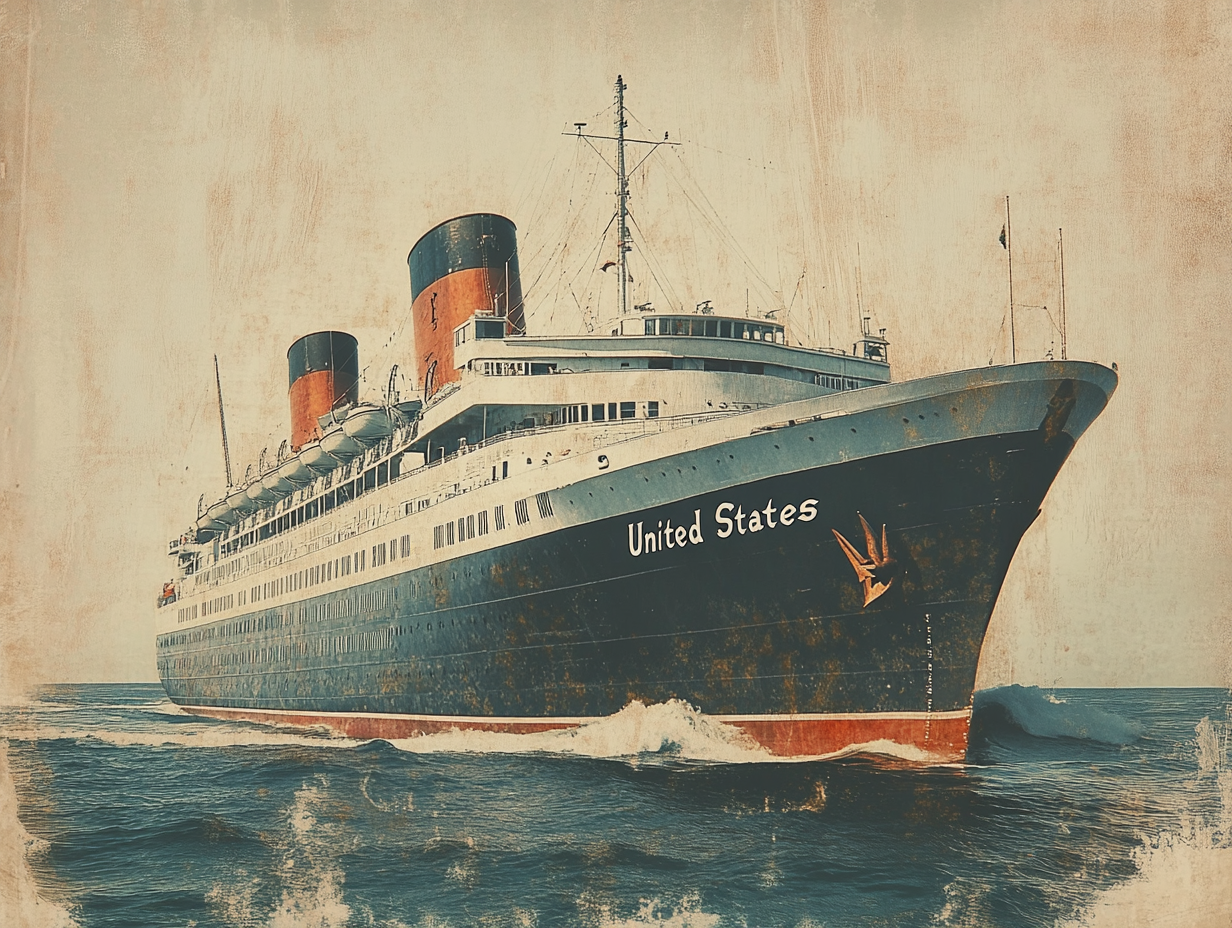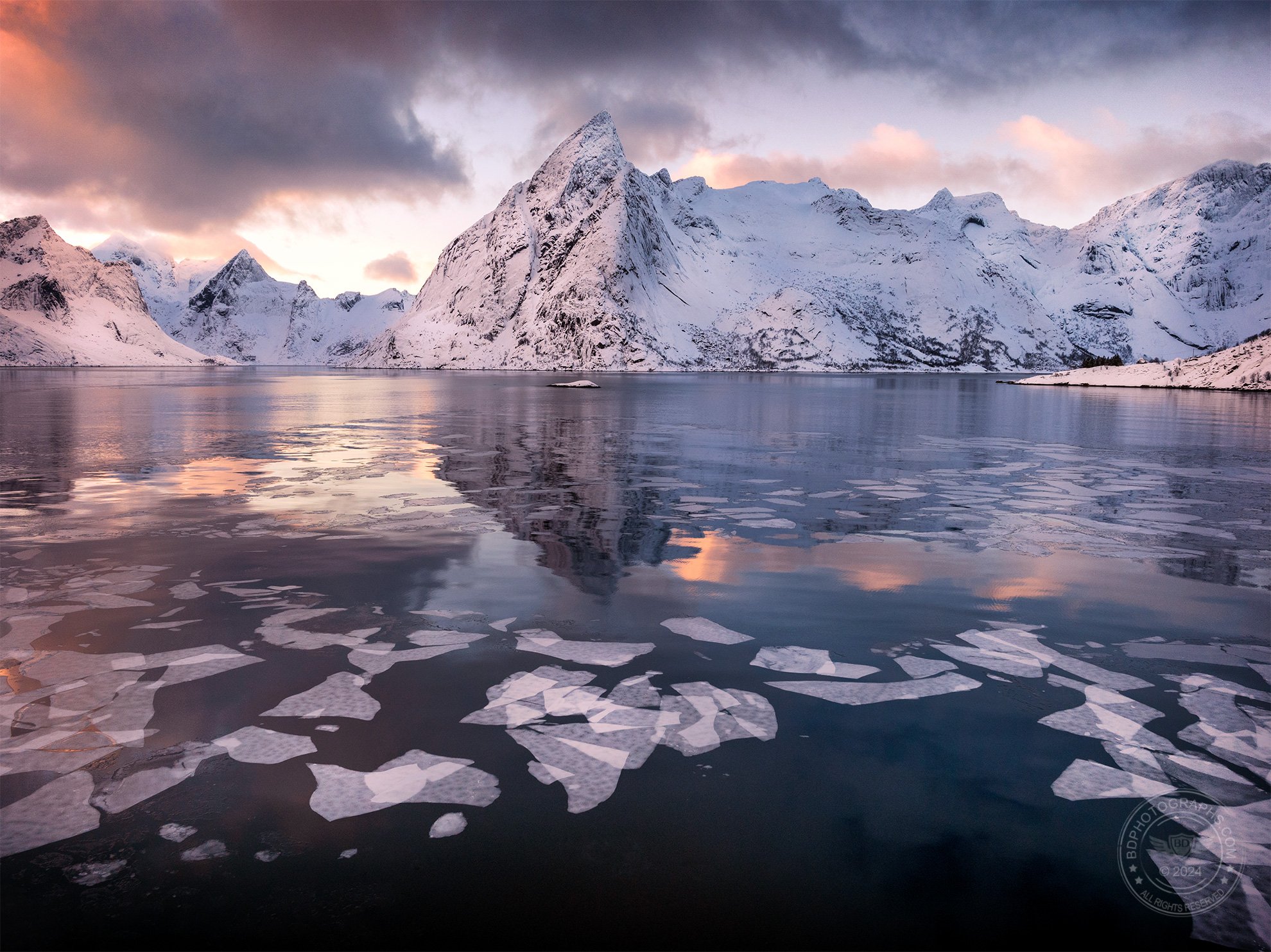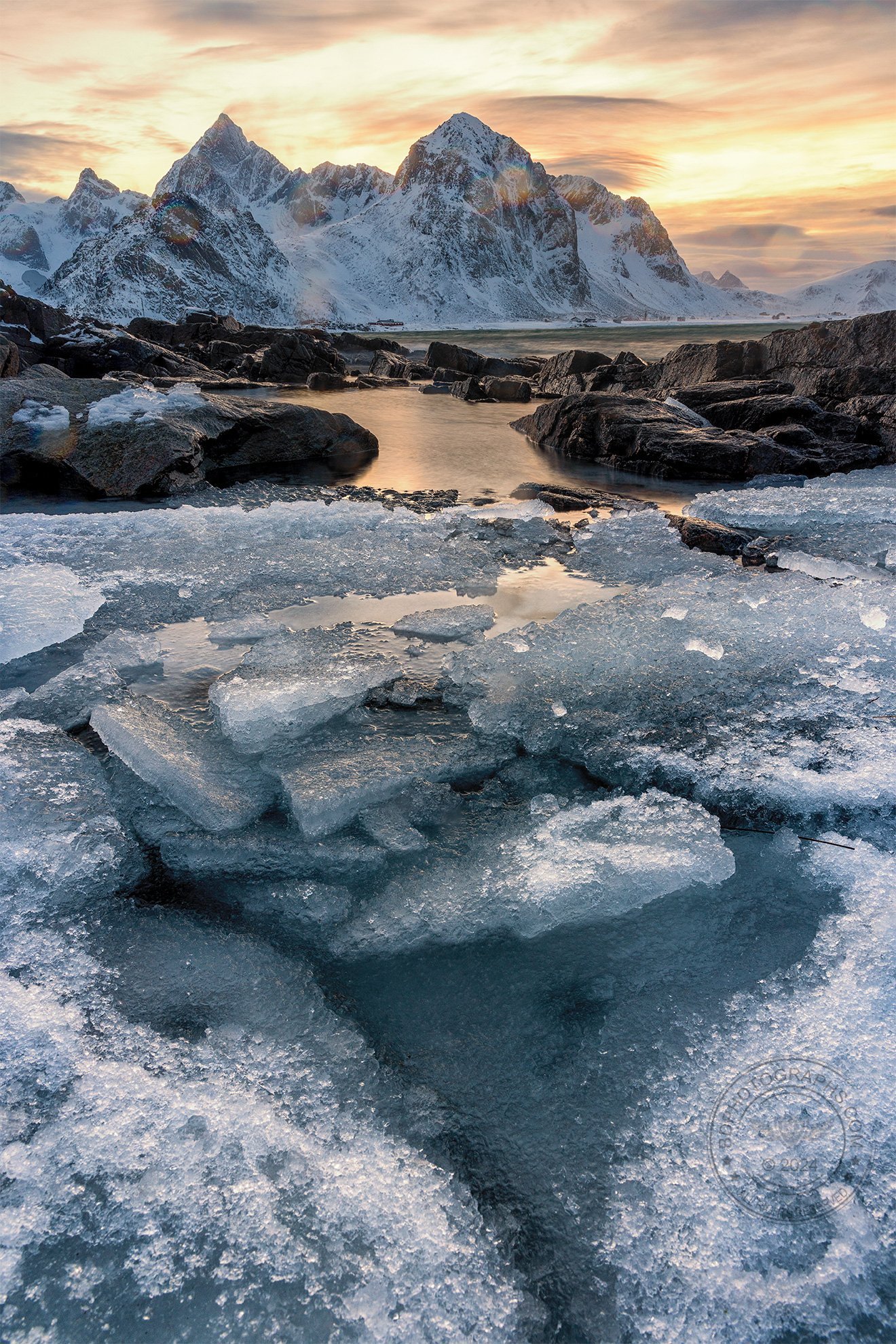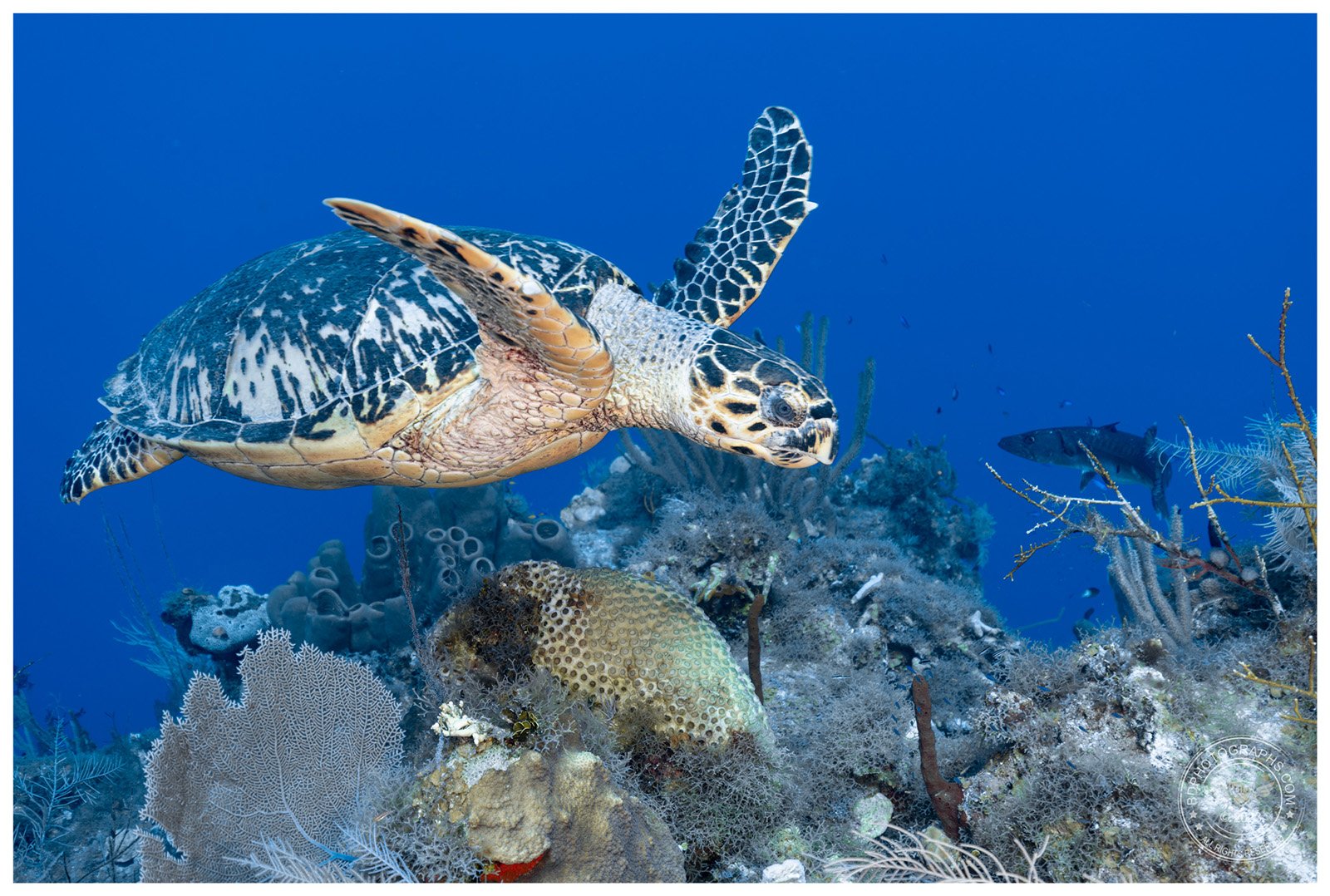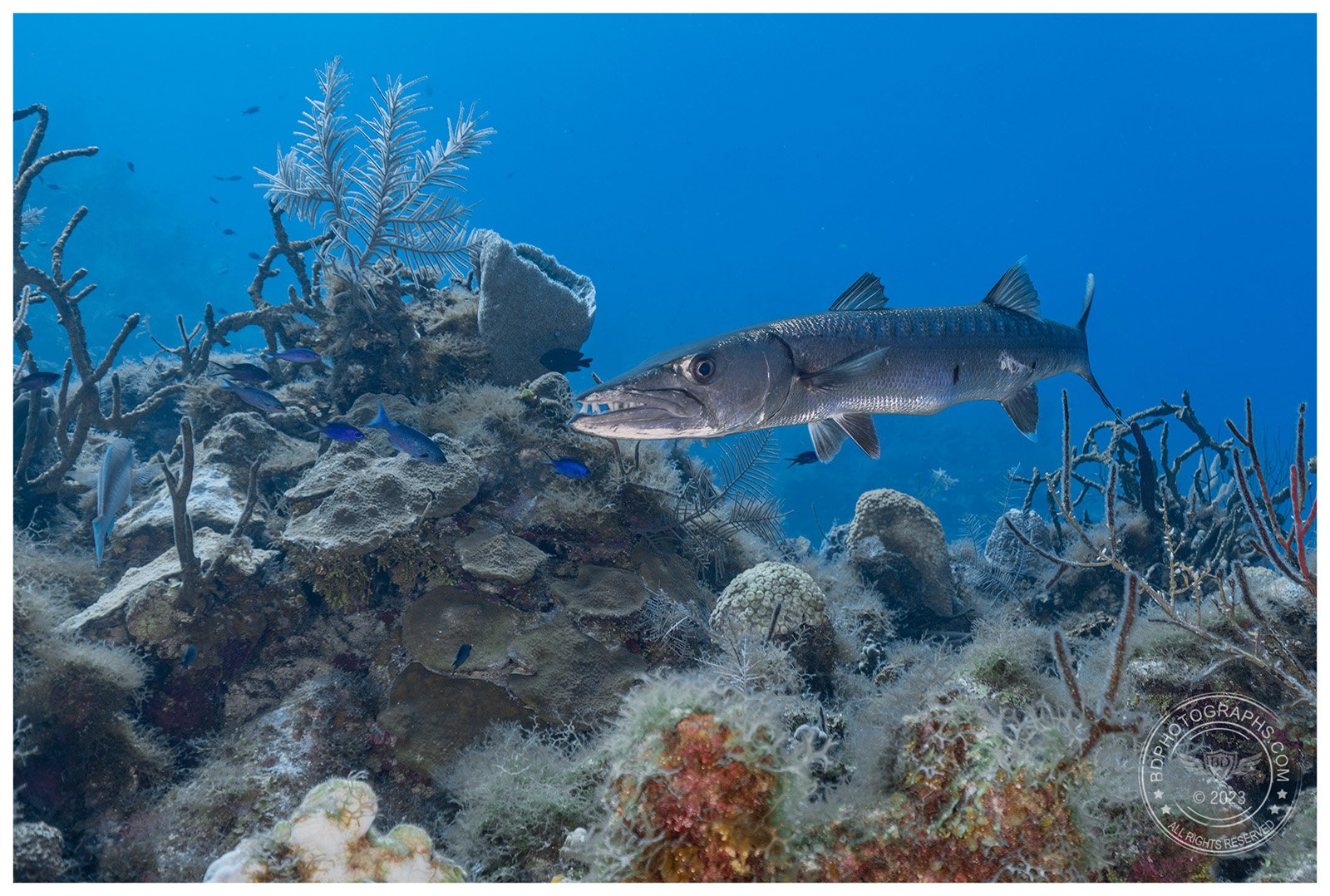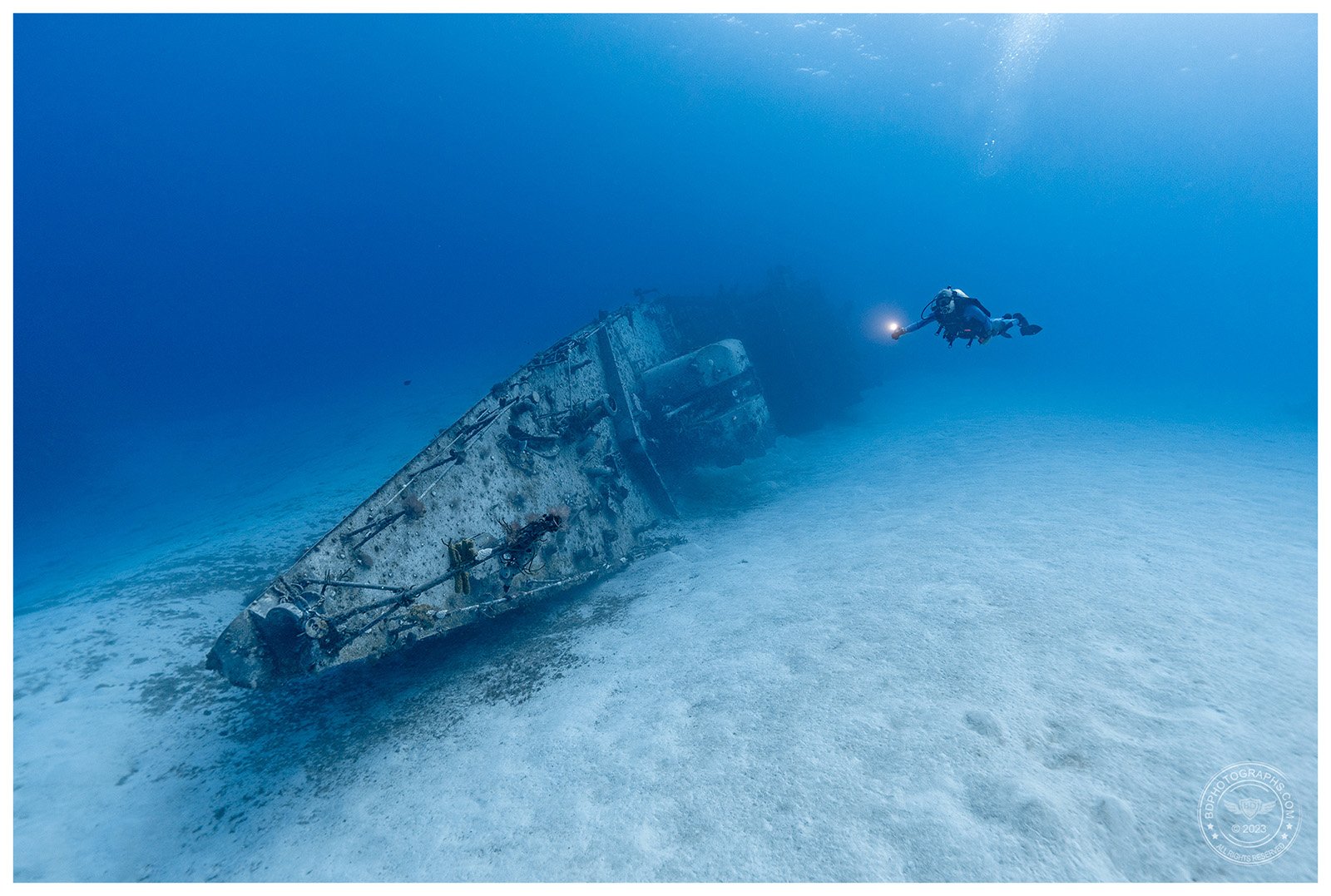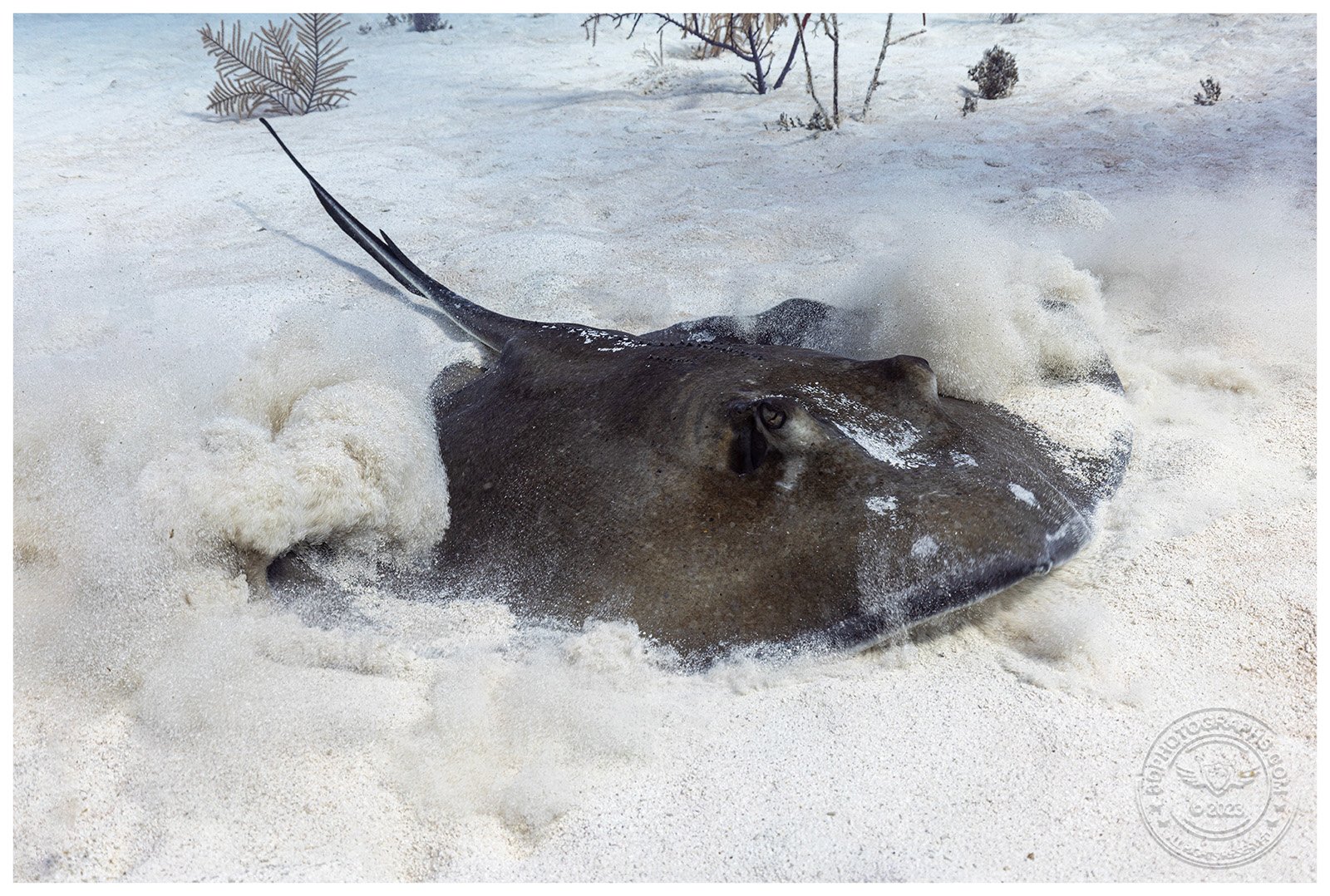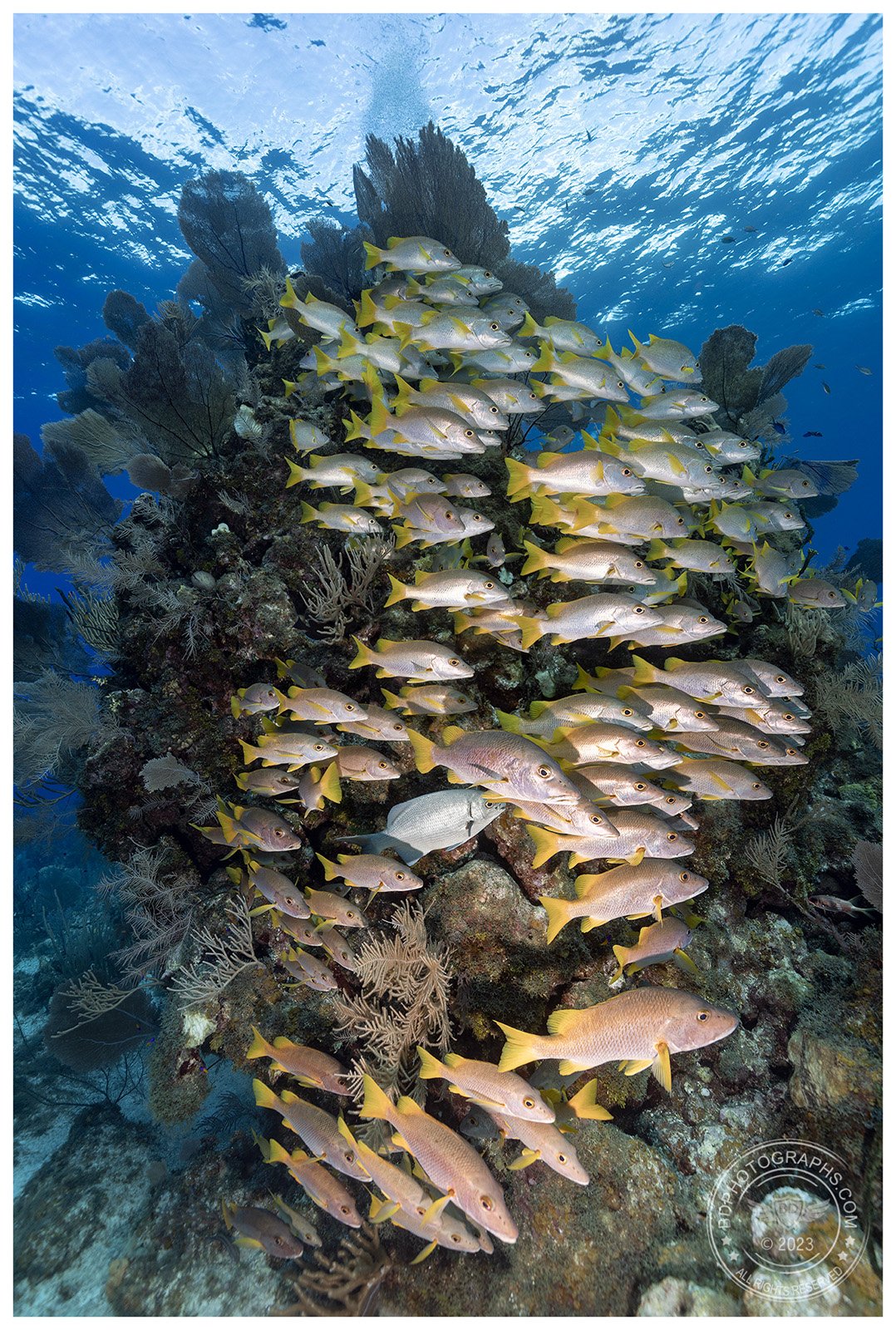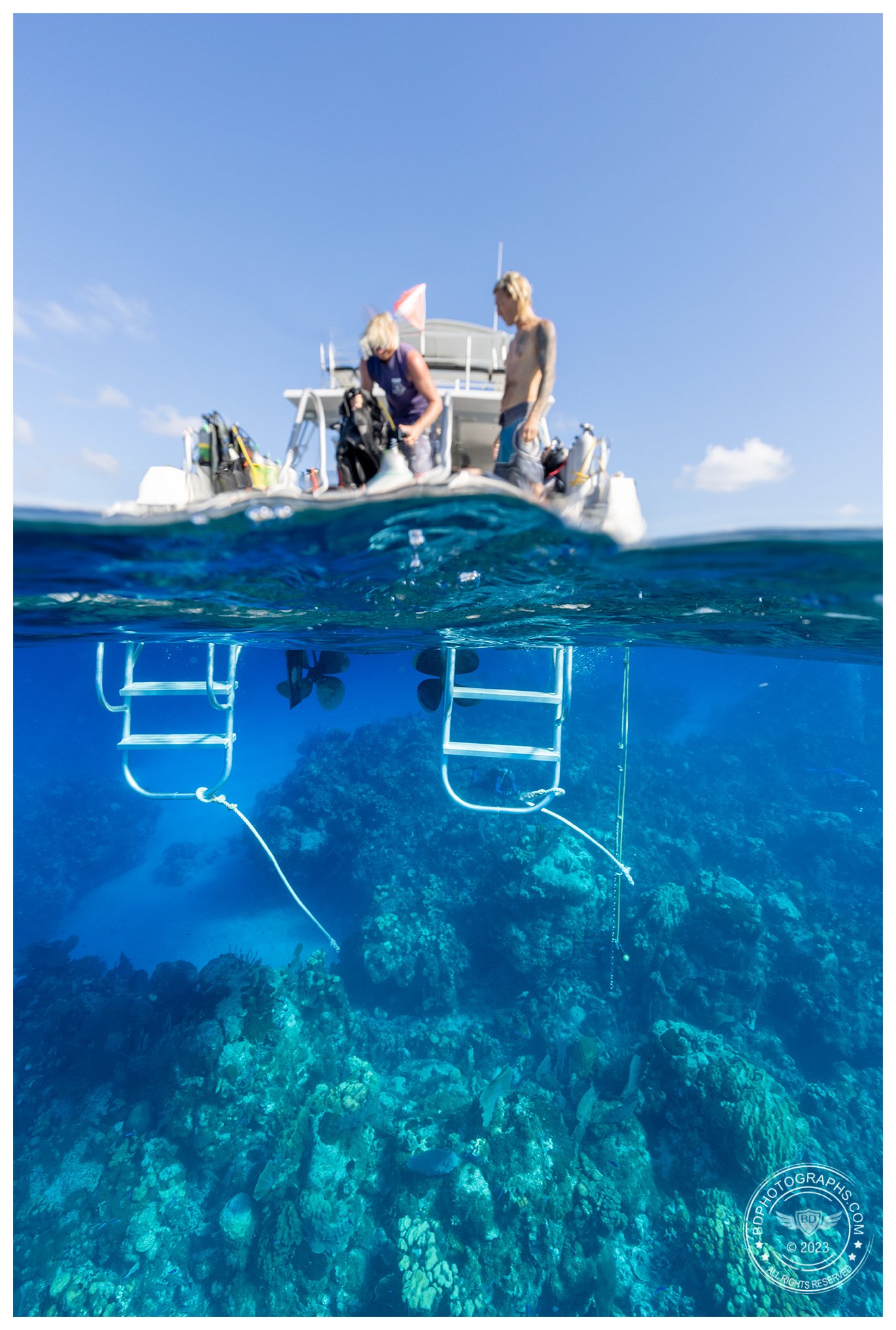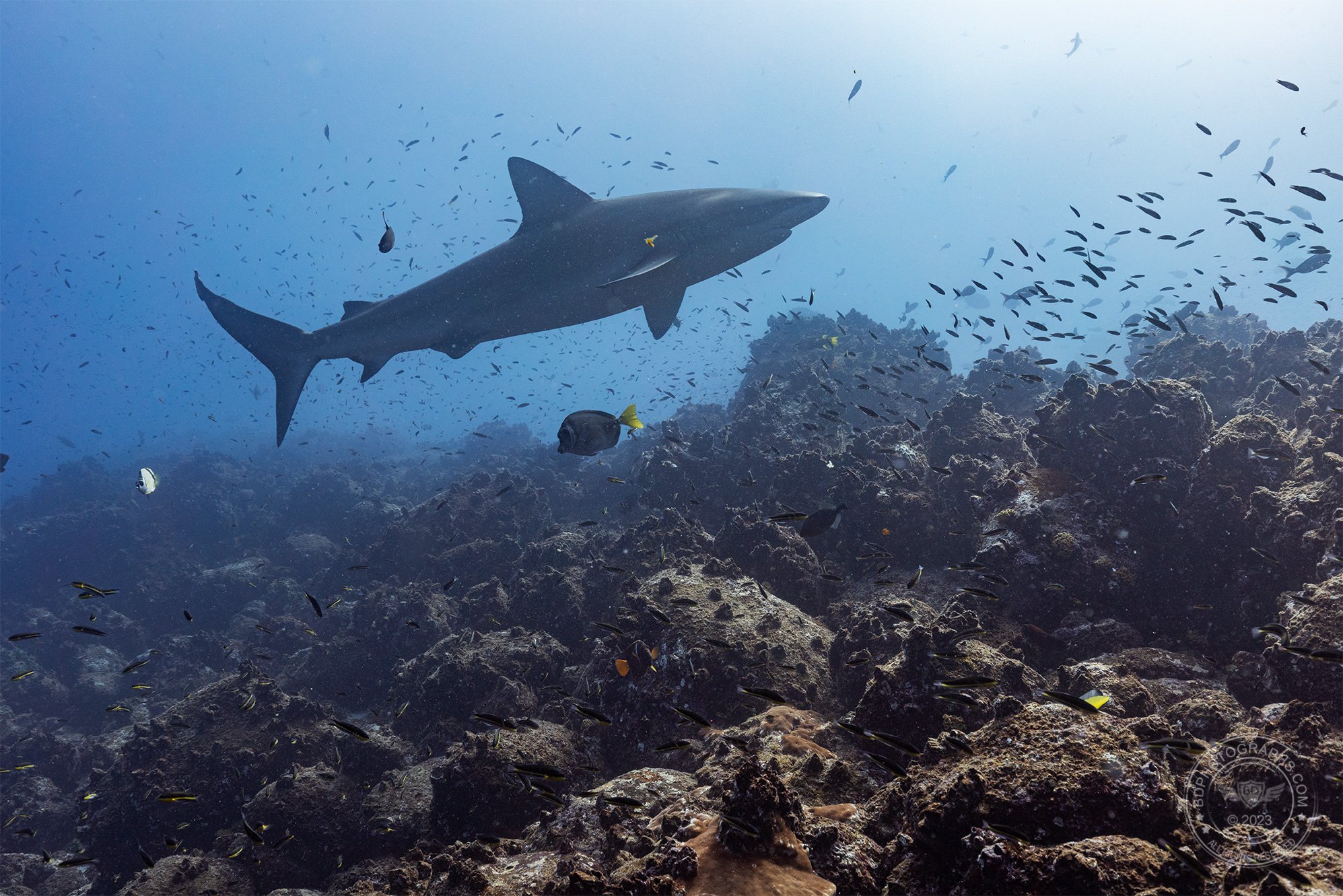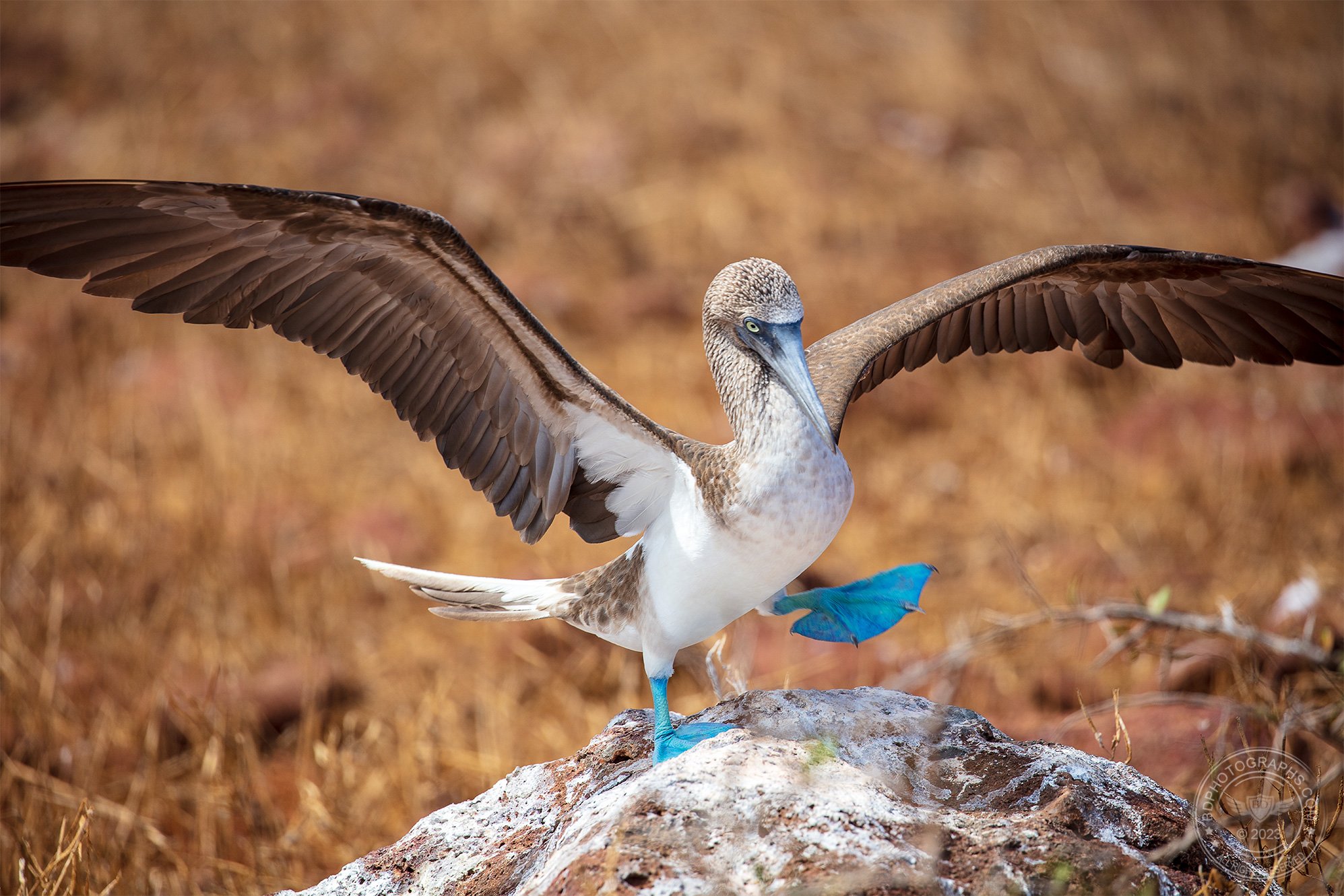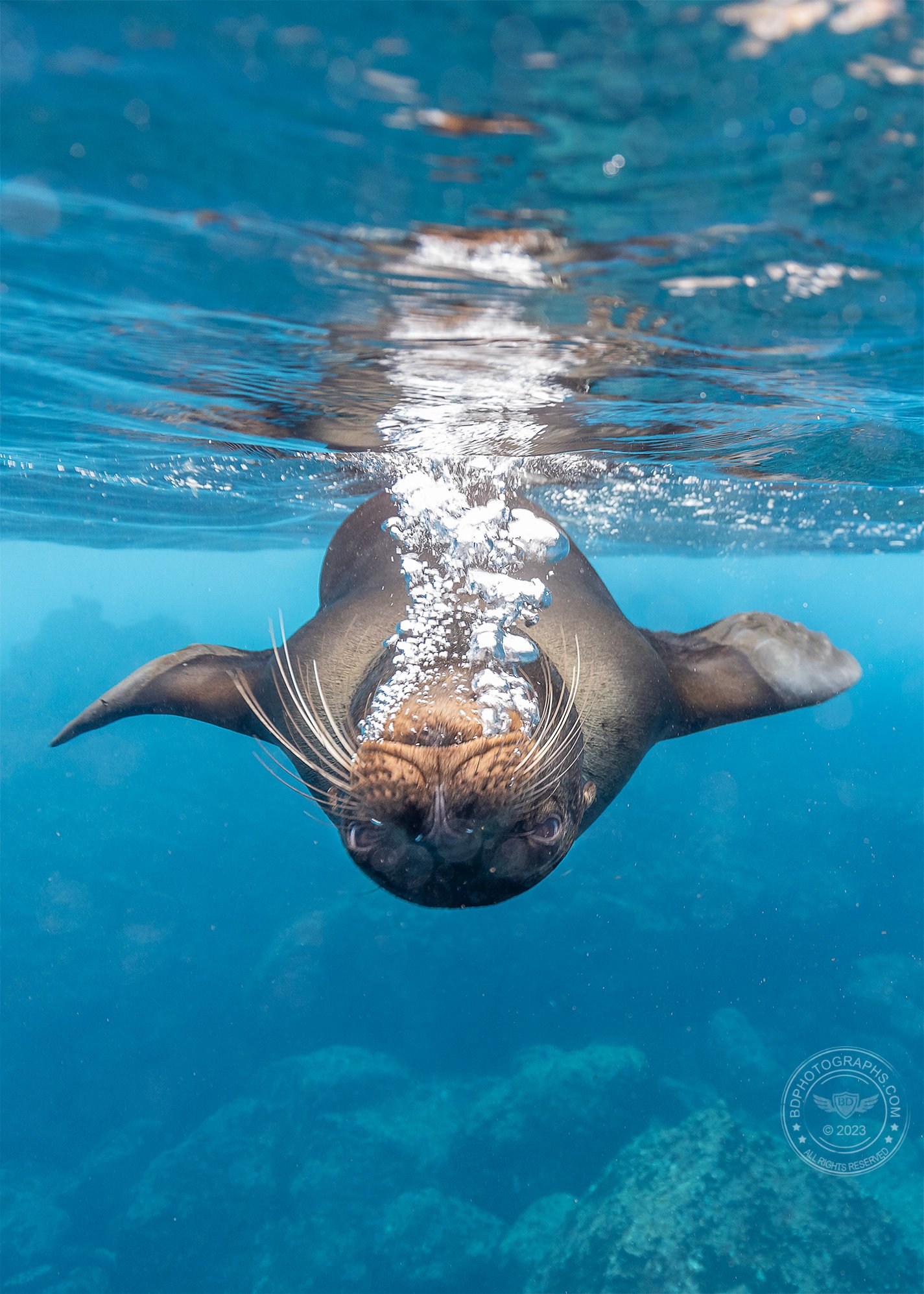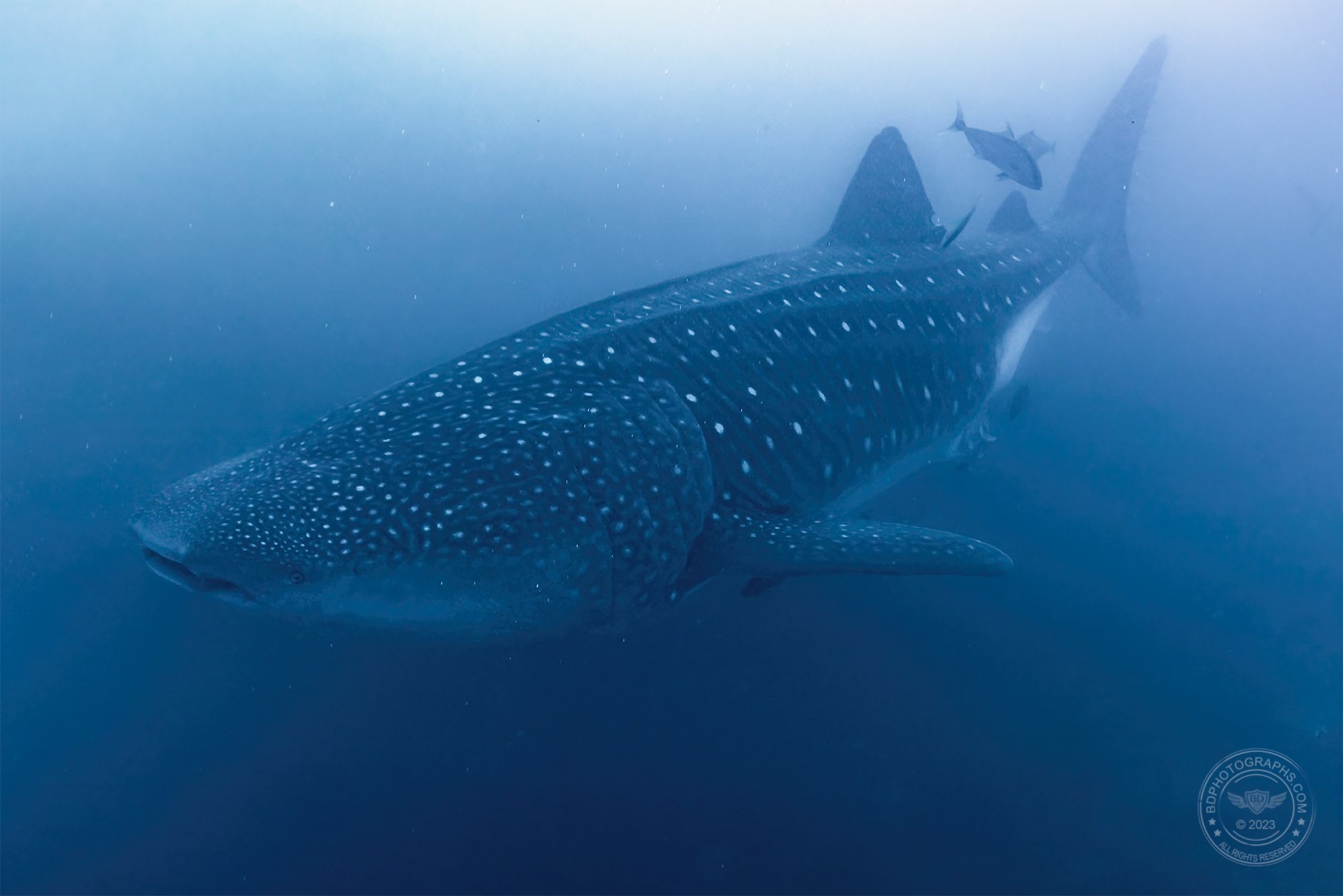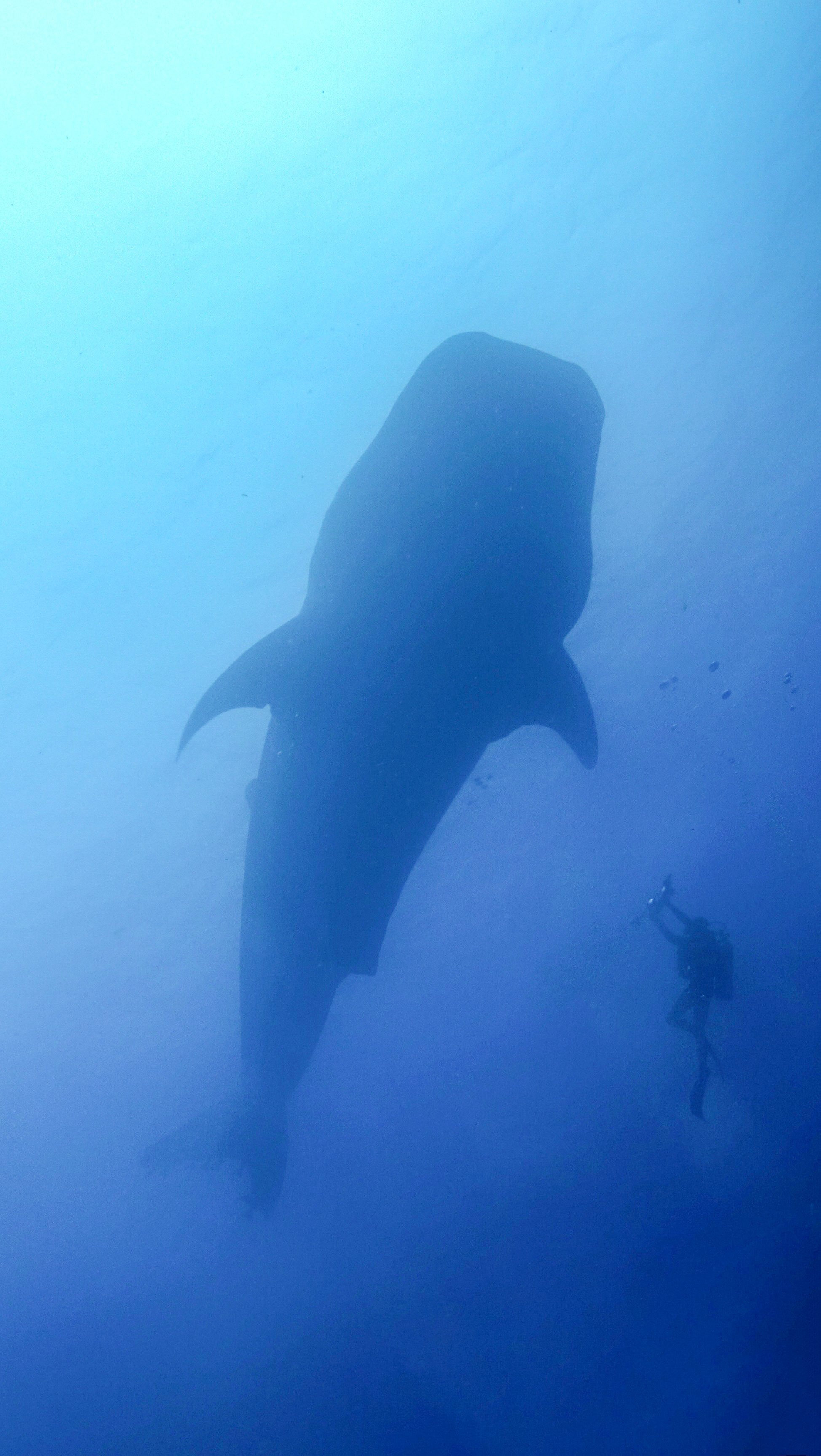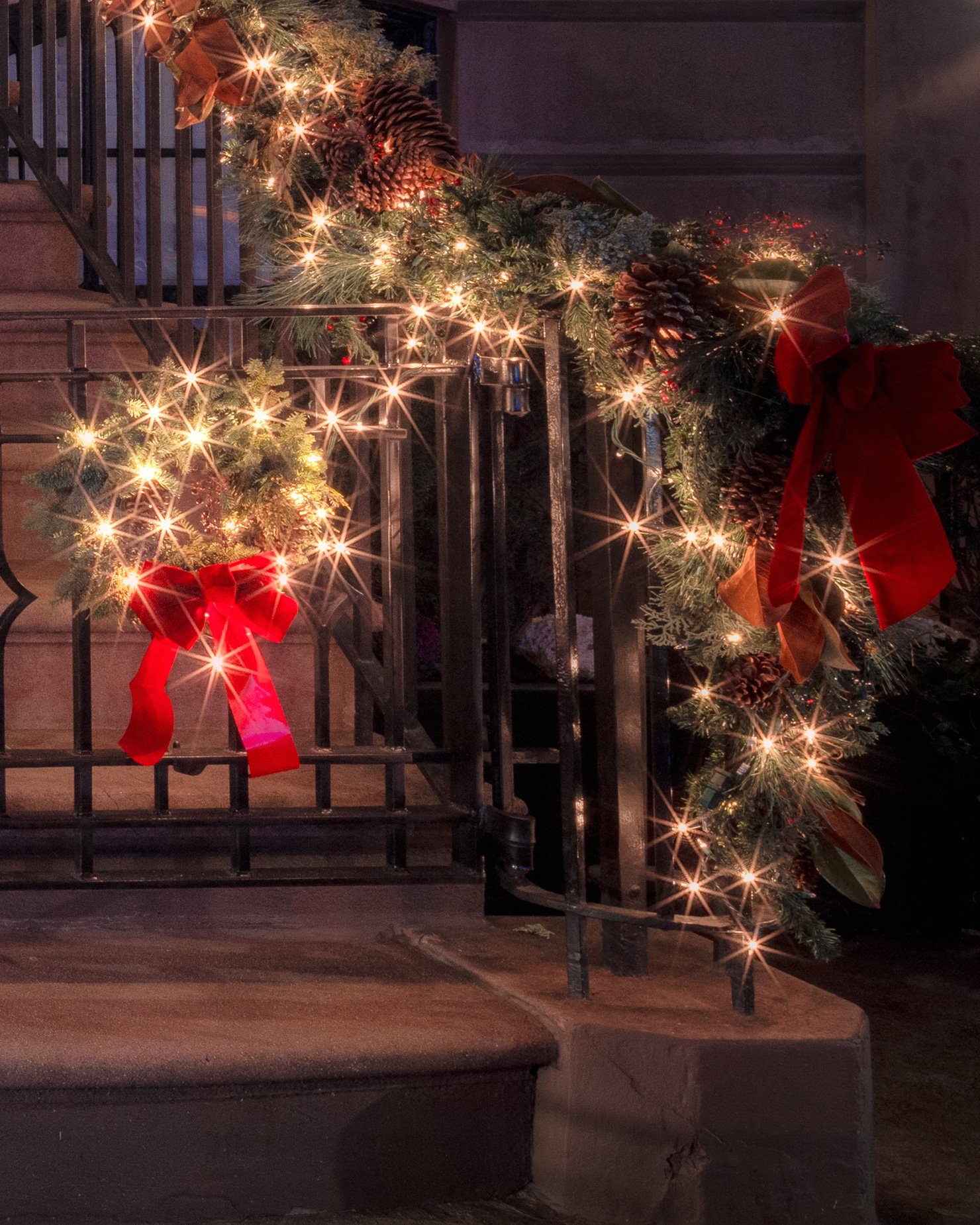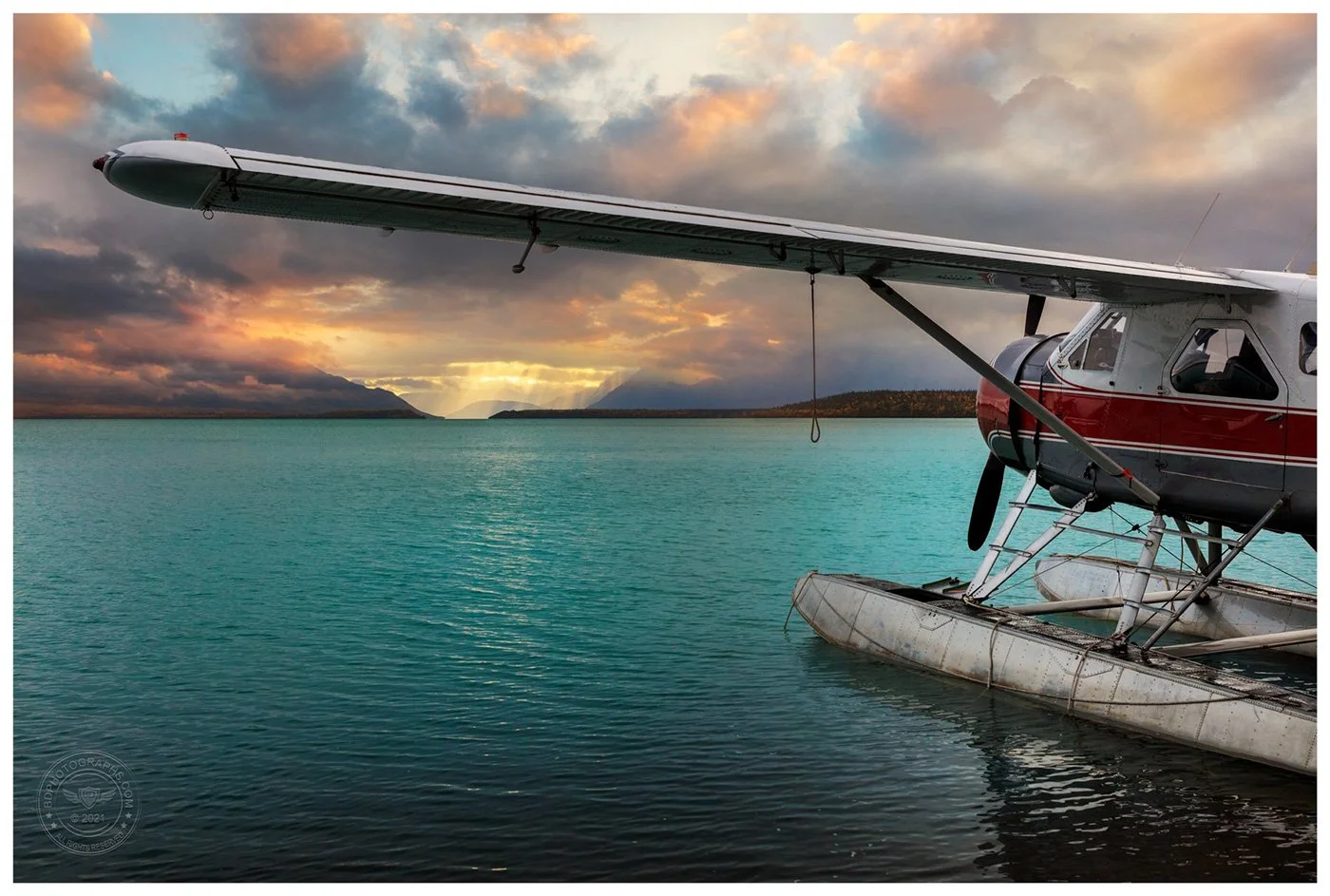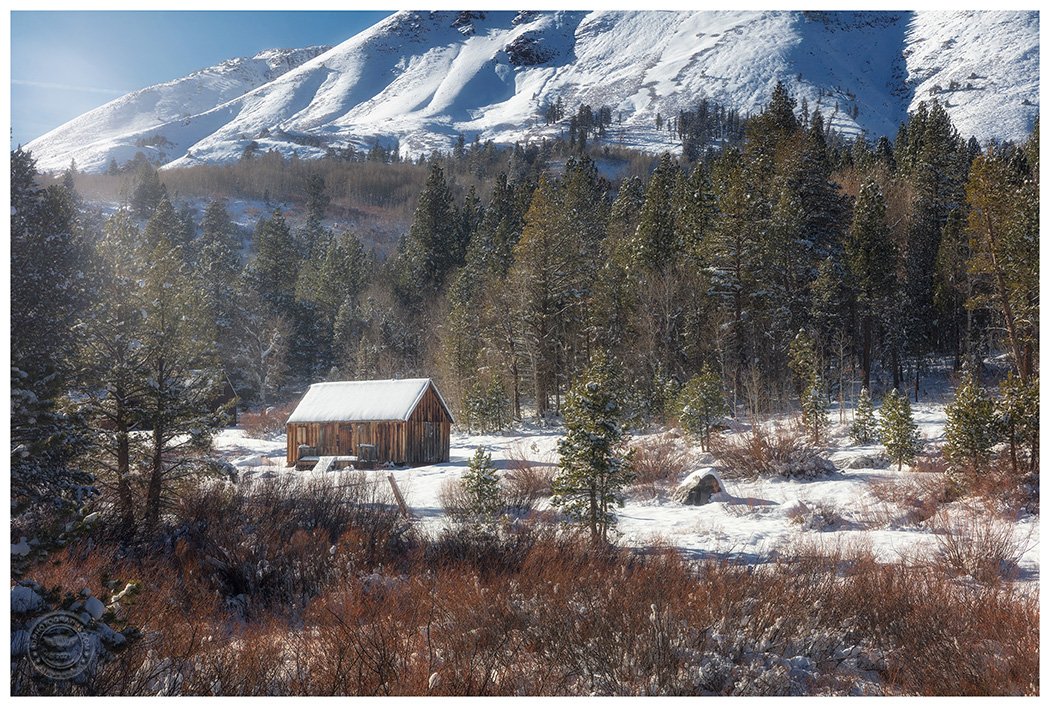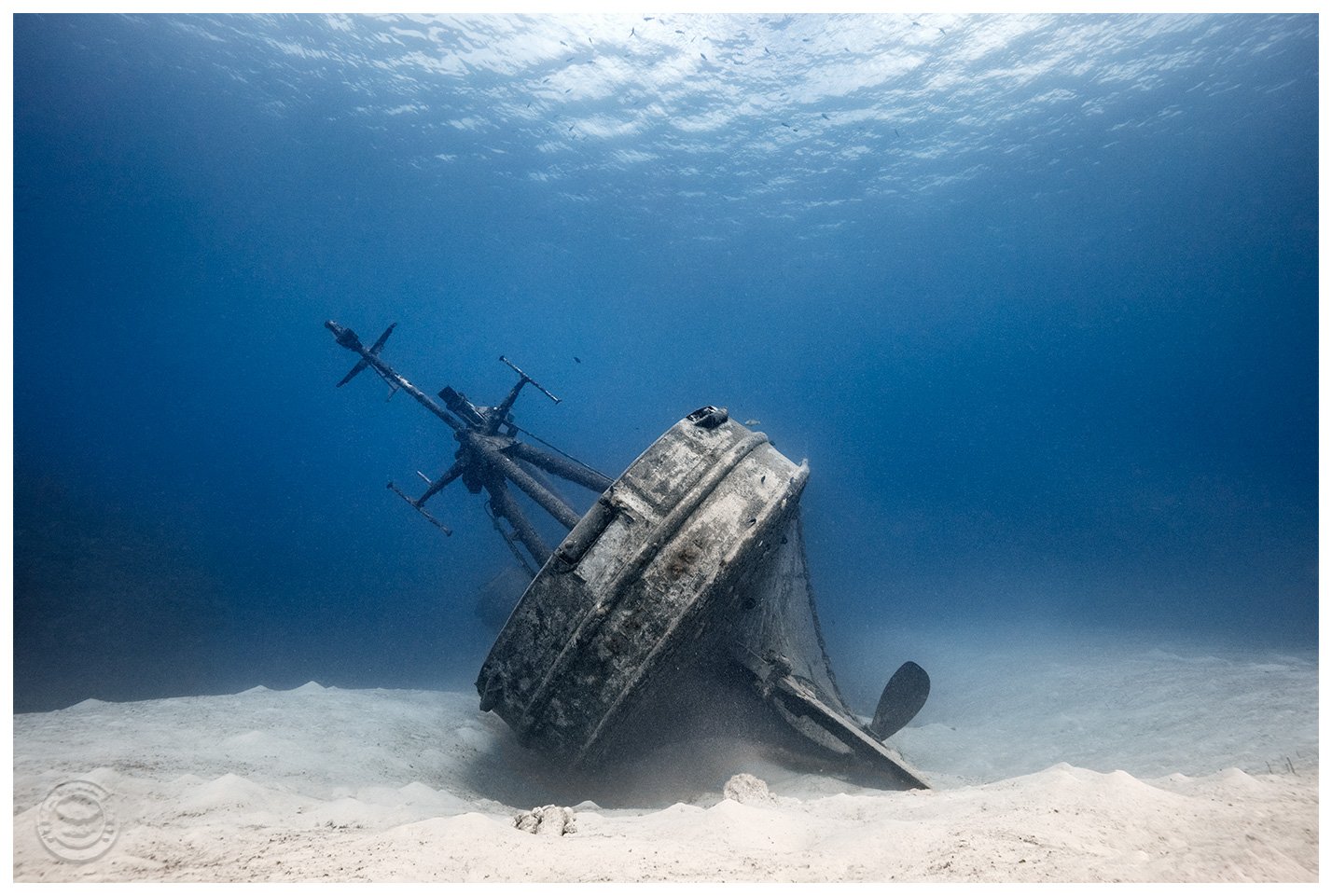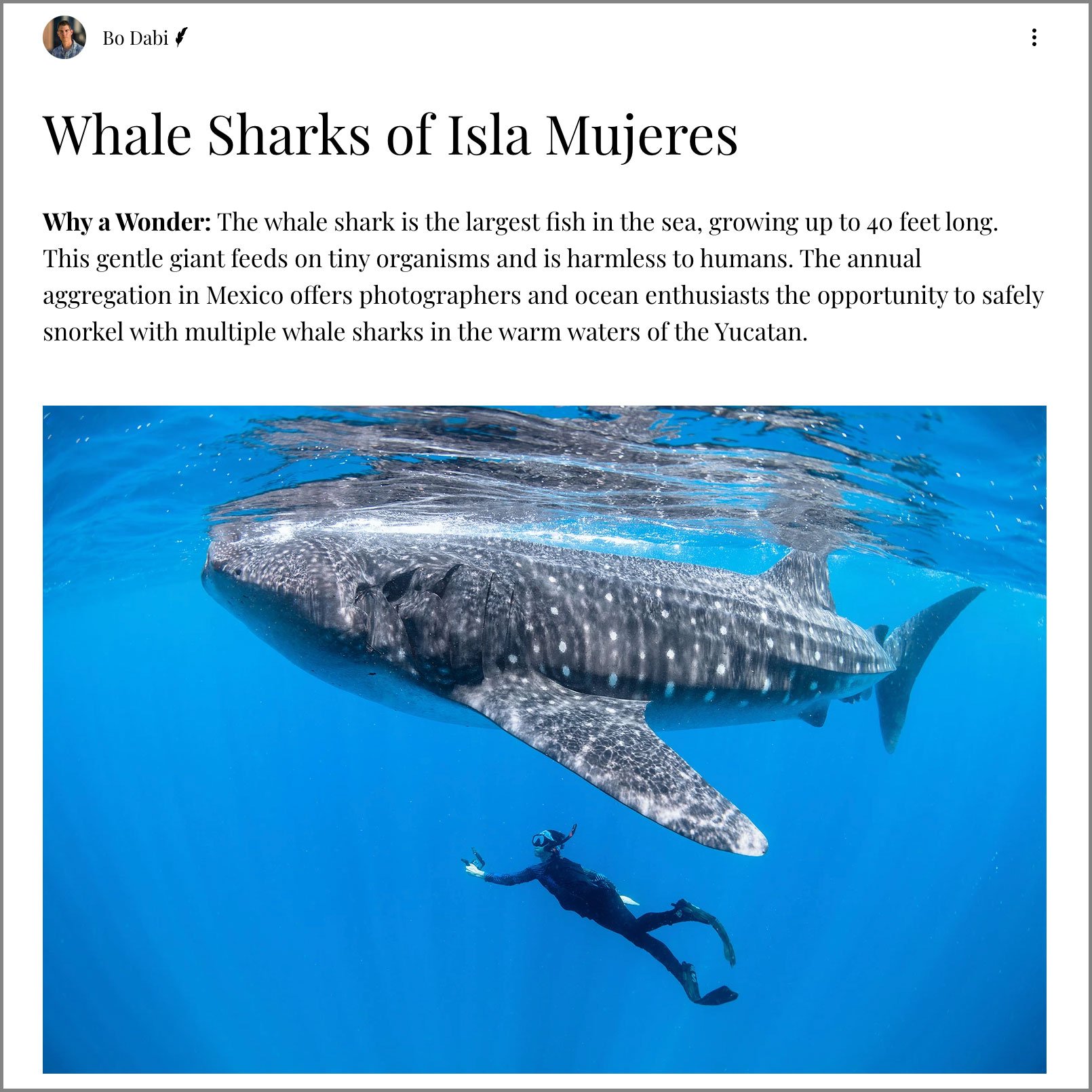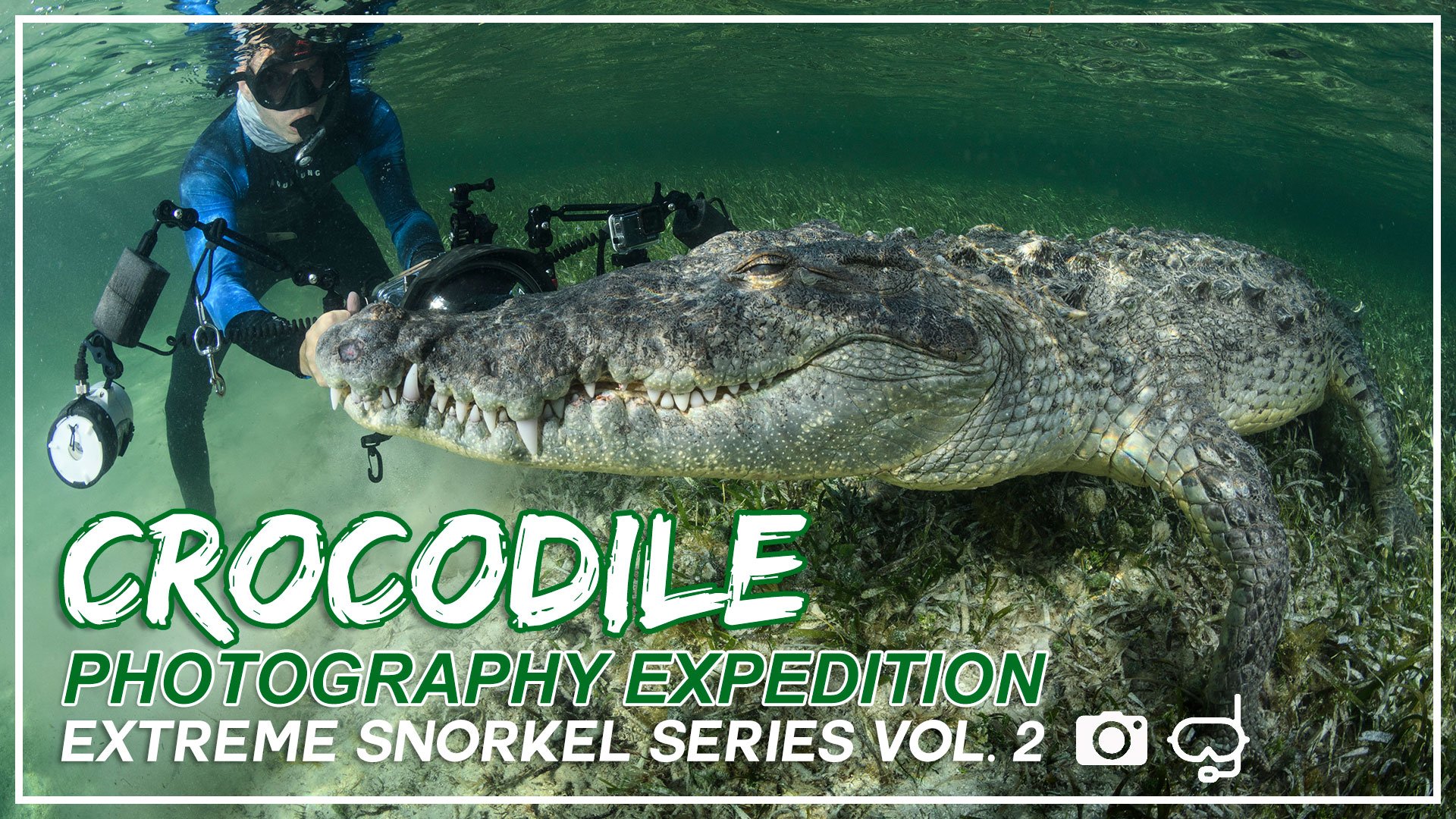The cold water seeps in and chills my core as we are lowered into the deep. Small mackerel scurry by as we quietly scan the murky water, looking for a shadow. And then, like a phantom through a curtain, the giant appears…
If you’ve ever wondered what it’s like to be in the water with a legend, you’ll enjoy my latest video: Photographing the Great White Shark.
Drawing on my experiences on three continents, we’ll enter the domain of the most infamous and awe-inspiring predator on the planet. On one of these trips I was able to capture this photo, which was featured in several forums by National Geographic:
I’ll also share my favorite portraits, action shots, and topside images — including close-ups of those famous teeth and iconic fins. Speaking of, one of my favorite images from these encounters is a topside shot of the dorsal fin pierced with the rusting bolts of an old satellite tag.
Slicing through the surface and leaving a wake
The video is only 8 minutes long, but is a truly immersive experience, taking you into the clanking metal of an aluminum shark cage. You’ll practically smell the oily chum that brings in the feisty males and confident females. We’ll also look at some practical tips if you decide to go on one of these adventures (e.g. pour hot water into your wetsuit to warm up prior to entering the cage). Hope you enjoy this one!
